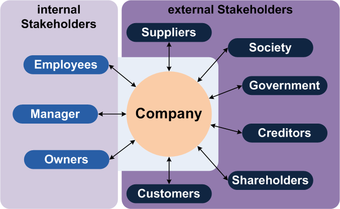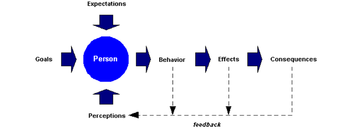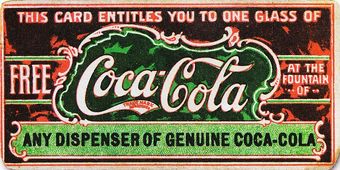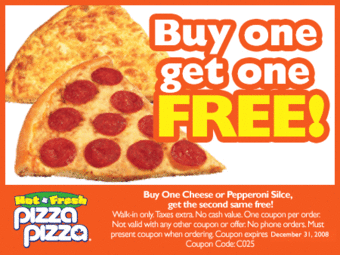14.1: Personal Selling
14.1.1: Defining Personal Selling
Personal selling is when salespersons use a process to engage customers and take a sales order that may not otherwise have been made.
Learning Objective
Compare and contrast sales and marketing functions within organizations
Key Points
- The personal selling process is a 7 step approach: prospecting, pre-approach, approach, presentation, meeting objections, closing the sale, and follow-up. Each step of the process has sales-related issues, skills, and training needs, as well as marketing solutions to improve each discrete step.
- Marketing and sales differ greatly, but have the same goal. Marketing improves the selling environment and plays a very important role in sales.
- Many companies find it challenging to get marketing and sales on the same page. The two departments, although different in nature, handle very similar concepts and have to work together for sales to be successful.
Key Term
- sales process engineering
-
The systematic application of scientific and mathematical principles to achieve the practical goals of a particular sales process. Selden pointed out that in this context, sales referred to the output of a process involving a variety of functions across an organization, and not that of a “sales department” alone. Primary areas of application span functions including sales, marketing, and customer service.
Introducing Personal Selling
Personal selling is when a company uses salespersons to build a relationship and engage customers to determine their needs and attain a sales order that may not otherwise have been placed. The personal selling process is a seven step approach: prospecting, pre-approach, approach, presentation, meeting objections, closing the sale, and follow-up.

Personal Sales Meeting
Meeting the customer face-to-face to makes the sales process more personalized.
The sales cycle, more generally speaking, turns leads into prospects, suspects into prospects and prospects into customers.
Prospecting is the step where salespeople determine leads or prospects. The pre-approach is used for preparing for the presentation through customer research and goal planning for the presentation. The approach is when the salesperson initially meets with the customer and determines a customer’s wants and needs. Once the salesperson knows the needs, he or she is ready for the presentation that will entice the customer to commit. After the presentation, a salesperson must meet objections or address customer concerns. Gaining commitment comes next. Finally, the salesperson must remember to follow up after the sale is made.
The sales department would aim to improve the interaction between the customer and the sales facility or mechanism and or salesperson. Sales management would break down the selling process and then increase the effectiveness of the discrete processes as well as the interaction between processes. For example, in many out-bound sales environments, each step in the typical process outlined above has sales-related issues, skills, and training needs, as well as marketing solutions to improve each discrete step.
The Relationship of Sales & Marketing
Marketing and sales differ greatly, but have the same goal. Marketing improves the selling environment and plays a very important role in sales. If the marketing department generates a list of potential customers, sales will benefit. The goal of a marketing department is to increase the number of interactions between potential customers and the organization. Achieving this goal may involve the sales team using promotional techniques such as advertising, sales promotion, publicity, creating new sales channels, or creating new products.
The relatively new field of sales process engineering views “sales” as the output of a larger system, not just as the output of one department. The larger system includes many functional areas within an organization. From this perspective, “sales” and “marketing,” among others, represent a number of processes whose inputs and outputs supply one another to varying degrees. In this context, improving an “output” (such as sales) involves studying and improving the broader sales process, as in any system, since the component functional areas interact and are interdependent.
Most large corporations structure their marketing departments in a similar fashion to sales departments and the managers of these teams must coordinate efforts in order to drive profits and business success. For example, an “inbound” focused campaign seeks to drive more customers “through the door”, giving the sales department a better chance of selling their product to the consumer.
Many companies find it challenging to get marketing and sales on the same page. The two departments, although different in nature, handle very similar concepts and have to work together for sales to be successful. Building a good relationship between the two that encourages communication can be the key to success – even in a down economy.
14.1.2: Value of Personal Selling
Personal selling minimizes wasted effort, measures marketing ROI better than most tools, promotes sales, and boosts word of mouth marketing.
Learning Objective
Discuss the advantages and disadvantages of personal selling
Key Points
- Since the effects of marketing are difficult to measure, personal selling gives insight into customer habits and responses to a particular marketing campaign or product offer.
- Sales people can tailor their presentations to fit the needs, motives, and behavior of individual customers. As sales people see the prospect’s reaction to a sales approach, they can immediately adjust as needed.
- High cost is the primary disadvantage of personal selling. With increased competition, higher travel and lodging costs, and higher salaries, the cost per sales contract continues to increase.
Key Term
- marketing mix
-
A business tool used in marketing products; often crucial when determining a product or brand’s unique selling point. Often synonymous with the four Ps: price, product, promotion, and place.
Personal selling aims to improve the interaction between the customer and the sales facility, and/or salesperson. Since the effects of marketing are difficult to measure, personal selling gives insight into customer habits and responses to a particular marketing campaign or product offer.

Making the Sale
Personal selling allows flexibility in presentation to generate sales.
Advantages of Personal Selling
The most significant strength of personal selling is its flexibility. Salespeople can tailor their presentations to fit the needs, motives, and behavior of individual customers. As sales people see the prospect’s reaction to a sales approach, they can immediately adjust as needed.
Personal selling also minimizes waste effort. Advertisers typically expend time and money to send a mass message about a product to many people outside the target market. In personal selling, the sales force pinpoints the target market, makes a contact, and expends effort that has a strong probability of leading to a sale.
Consequently, an additional strength of personal selling is that measuring effectiveness and determining the return on investment are far more straightforward for personal selling than for other marketing communication tools, where recall or attitude change is often the only measurable effect.
The fourth benefit of personal selling is that a salesperson is in an excellent position to encourage the customer to act. The one-on-one interaction of personal selling means that a salesperson can effectively respond to and overcome objections (customers’ concerns or reservations about the product) so that the customer is more likely to buy. Sales people can also offer many specific reasons to persuade a customer to buy, in contrast to the general reasons that an ad may urge customers to take immediate action.
A final strength of personal selling is the multiple tasks the sales force can perform. For instance, in addition to selling, a sales person can collect payment service or repair products, return products, and collect product and marketing information. In fact, sales people are often best at disseminating negative and positive word-of-mouth product information.
Disadvantages of Personal Selling
High cost is the primary disadvantage of personal selling. With increased competition, higher travel and lodging costs, and higher salaries, the cost per sales contract continues to increase. Many companies try to control sales costs by compensating sales representatives based on commission only, thereby guaranteeing that salespeople get paid only if they generate sales. However, commission-only salespeople may become risk-averse and only call on clients who have the highest potential return. These sales people, then, may miss opportunities to develop a broad base of potential customers that could generate higher sales revenues in the long run.Companies can also reduce sales costs by using complementary techniques, such as telemarketing, direct mail, toll-free numbers for interested customers, and online communication with qualified prospects. Telemarketing and online communication can further reduce costs by serving as an actual selling vehicle. Both technologies can deliver sales messages, respond to questions, take payment, and follow up.
A second disadvantage of personal selling is the problem of finding and retaining high quality people. First, experienced sales people sometimes realize that the only way their income can outpace their cost-of-living increase is to change jobs. Second, because of the push for profitability, businesses try to hire experienced salespeople away from competitors rather than hiring college graduates, who take three to five years to reach the level of productivity of more experienced salespeople. These two staffing issues have caused high turnover in many sales forces.
Another weakness of personal selling is message inconsistency. Many salespeople view themselves as independent from the organization, so they design their own sales techniques, use their own message strategies, and engage in questionable ploys to create a sale. Consequently, it is difficult to find a unified company or product message within a sales force, or between the sales force and the rest of the marketing mix.
A final weakness is that sales force members have different levels of motivation. Sales people may vary in their willingness to make the desired sales calls each day; to make service calls that do not lead directly to sales; or to use new technology, such as a laptop, e-mail, or the company’s Web site. Finally, overzealous sales representatives may tread a thin line between ethical and unethical sales techniques. The difference between a friendly lunch and commercial bribery is sometimes blurred
14.2: The Personal Selling Process
14.2.1: Generating Needs
Prospecting starts with defining a narrow target market, identifying the customer’s wants, and then offering custom solutions.
Learning Objective
Explain tools used in evaluating customer needs
Key Points
- Where the potential market is very wide, there are significant advantages to limiting oneself to just one or two specialized market segments.
- To identify which particular market segment to aim for, a salesperson should analyze the profile of their existing customers, and secure a picture of what their “ideal customer” should look like. The profile should include psycho-demographic characteristics, such as age, sex, jobs, and interests.
- It is important to find out what customers really need, customize products to meet those needs, and make sure your products fit into the customer’s existing world.
Key Term
- unique selling proposition
-
Any aspect of an object that differentiates it from similar objects.
Prospecting for customers is the first step to selling. The entire object of any prospecting must be to find sales leads that can eventually be translated into sales turnover. Effective prospecting requires a systematic methodology. The essential rule is to prospect all the time, and not just when the list of potential people on whom to call runs out.
Narrowing the Target Market and Customer Field

Defining a Target Market
Prospecting in a defined target market that mostly contains characteristics of an ideal customer will help in making the sale.
Where the potential market is very wide, there are significant advantages to limiting oneself to just one or two specialized market segments. First, a salesperson does not have the time to make everyone his customer. Second, there may be some products in a salesperson’s product range that match up better to one industry or market segment than another. If they can tailor their products to secure a unique selling proposition in that particular market segment, they will meet less competition.
By focusing on a particular industry, a salesperson can gradually acquire technical knowledge of his customer’s industry, thus enabling them to develop empathy and talk on equal terms with their customers. To identify which particular market segment to aim for, a salesperson should analyze the profile of their existing customers, and secure a picture of what their “ideal customer” should look like. The profile should include psycho-demographic characteristics, such as age, sex, careers, and interests, since all will impact where or when they buy. If viable, the salesperson should also consider using mail shots and advertising to evaluate their potential market.
Having decided on a specific market, the salesperson should try to limit their prospecting to remain within that market. The ideal customer (i.e., the one who buys as soon as the salesperson talks to them) is probably non-existent, but the closer a salesperson’s prospect matches that ideal customer profile, the fewer sales objections will arise.
Identifying a Customer’s Wants
A process to determine the actual needs of consumers requires the identification of the market factors that produce them. In this process, companies should find real consumption motivators that eventually evolve into product offerings. Furthermore, a correct business definition leads to a natural market orientation; for instance, Charles Revson’s famous quote, “in the factory we make cosmetics; in the drug store we sell hope,” allowed the company to develop cosmetic products based on women’s hopes rather than product features.
Several potential pitfalls should be avoided:
- the natural tendency to impose a personal point of view when launching a new product or entering a new market.
- simple imitation about competitors’ moves.
- lack of sufficient research and market knowledge to produce market-proved ideas.
A framework has been proposed to align customer’s needs and wants with companies capabilities. This framework was introduced by Sherri Dorfman in her 2005 marketing article, entitled “What do Customers Really, Really Want”.
Three Step Process to Develop a Market Orientation
Step 1. Discovery: Finding out What Customer’s Need
Learn about customer needs and priorities to identify opportunities in the company to fulfill these needs, and to create new or enhanced product offerings. These ideas must be incorporated in a market research process involving customers and other clients and suppliers in the Value Chain.
Step 2. Definition: Customizing the Offering to Meet Customer Needs
In this step, Dorfman proposes prioritizing features and benefits identified by clients, suppliers, and customers. Different qualitative research techniques such as in-depth interviews, ethnographies, and focus group sessions permit the identification of the core market needs.
Step 3. Validation: Ensuring Offerings fit within Customer’s World
A salesperson must understand their products thoroughly, and ensure that there is a match between product, benefits, and customer needs. Further communication with consumers validate the final definition of a market-based product or service. This validation takes place as the prototypes are assessed by consumers to identify potential problems and to smooth out design issues.
All these models take into account the so-called end consumer perspective, which implies that consumers buying, using, or recommending the products are the driving force behind successful marketing efforts.
14.2.2: Preapproach
The preapproach is when you gather relevant information regarding the prospect in order to create a customized sales presentation.
Learning Objective
Examine the elements of the sales pre-approach used in personal selling and sales promotion
Key Points
- To create a customized presentation and sales pitch, a salesperson must spend time defining their goals, researching the client’s needs and problems, and asking what information the client needs before choosing to buy the offering.
- The salesperson must ask if the product meet’s the client’s needs, if the client has the finances to make a purchase, and if the audience of the presentation is the actual decision-maker.
- Through careful planning, salespeople can focus on important customer needs and communicate the relevant benefits to the buyer, address potential problem areas prior to the sales presentation, and enjoy the self-confidence that arises after thorough preparation.
Key Terms
- preapproach
-
the stage of the selling process that consists of customer research and goal planning for the presentation
- cold call
-
A sales call either by telephone or personal presence, made without a referral or without preparing the recipient of the call.
After the prospect has been qualified, the salesperson continues to gather information about the prospect. The preapproach can be defined as obtaining as much relevant information as possible regarding the prospect prior to making a sales presentation. The knowledge gained during the preapproach allows the tailoring of the sales presentation to the particular prospect.
Researching the Client
To create a customized presentation and sales pitch, a salesperson must spend time defining their goals researching the client. Several factors including the following must be considered prior to approaching a customer:
- The objective or objectives of the presentation.
- What are the buyer’s needs? What is the buying situation? What is the buyer’s problem that can be solved with the salesperson’s offering?
- The type of presentation to be planned and delivered.
- What information will the prospect require before they will choose to buy my offering? The salesperson should know the requirements that a potential customer has set for his future, the priorities that he has decided, and in all probability, his financial resources. Failing to analyze a prospect is the main reason for a great deal of wasted prospecting spent on a customer who should have been promptly discarded after due research.
Gather Information from Printed Materials
A salesperson should read all he can about his market, using information that is readily and freely available in libraries, reference books, trade directories, newspapers, and magazines. Local newspapers are full of names, addresses, and occupations of many people in the community, who could use his services.

Researching the Client
Using printed materials can aid in creating a customized sales presentation to a client.
Gather Information from Contacts
A salesperson can use personal and previous business contacts to gather information on new clients and their preferences. Personal contacts can also be a great source for mining information. Aside from friends and family, there are also professionals a salesperson has dealt with in his own life such as neighbors, real estate agents, decorators, and fellow PTA members. By leveraging the established relationships a salesperson has with these contacts, he will find it easier than cold calling to get the inside track on a new customer.
Does Your Product Meet the Buyer’s Needs?
A salesman’s product must be relevant to his prospect. If no one’s requirements seem to match with what he is selling, then he is either moving in the wrong circles or selling the wrong product. The unfortunate truth is that many sales are attempted to prospects who could be eliminated as possibilities by a little research.
Does Your Prospect Have the Finances to Buy?
The salesman must establish on the outset whether the prospect can afford to buy. The information required can generally be established very early in a sales interview through a simple trial close such as, “If I can convince you that…, would you be prepared to consider…..? ‘” You are not asking for a decision, and the prospect, in answering, is merely saying, “You have not convinced me yet, but if you can, I would be prepared to…” Failing to establish this initial willingness or ability to invest will result in endless, unprofitable discussions.
Is Your Prospect the Decision Maker?
It is vital to know who the decision-maker is, so as to save a great deal of time in having to redo yet another sales presentation. It is sometimes necessary to disbelieve someone who says that he is the decision maker. It is possible that someone who does not have the authority may well be reluctant to say so, possibly to pre-screen the salesperson first, before allowing him to meet the actual decision-maker.
Benefits of Careful Planning & Research
Careful planning offers advantages for both the salesperson and the buyer. Through careful planning salespeople can:
- Focus on important customer needs and communicate the relevant benefits to the buyer.
- Address potential problem areas prior to the sales presentation.
- Enjoy self-confidence, which generally increases with the amount of planning done by the salesperson.
In planning the presentation, the salesperson must select the relevant parts of his knowledge base and integrate the selected parts into a unified sales message. For any given sales situation, some of the facts concerning the salesperson’s company, product, and market will be irrelevant, and the challenge is in the task of distilling relevant facts from the total knowledge base.
14.2.3: Approach
How you approach a sales pitch in terms of attitude, prospect knowledge, and customized product will determine your success.
Learning Objective
Describe the characteristics and requirements for a sales approach as part of personal selling and sales promotion
Key Points
- Every salesperson should prepare a customized elevator pitch to quickly entice the customer to view the product offered as the solution to his needs.
- Direct selling is the marketing and selling of products directly to consumers away from a fixed retail location. Solution selling is when the salesperson focuses on the customer’s pain and addresses the issue with his offerings.
- First impressions are vital to making a successful sales call. Showing genuine but tempered enthusiasm about the product, making eye contact, and actively listening to whomever you come in contact with are just a few suggestions that will create a good impression.
Key Term
- gatekeeper
-
A person or group who controls access to something or somebody.
Getting in the Door
Every salesperson should prepare a customized elevator pitch to quickly entice the customer to view the product offered as the solution to his needs. The elevator pitch simply defines a product, service, or organization and its value proposition. The term “elevator pitch” reflects the idea that it should be possible to deliver the summary in the time span of an elevator ride, or approximately thirty seconds to two minutes. Other techniques to get a foot in the door include leveraging common contacts or referrals and simply building a relationship through conversation with the gatekeepers to get information on the best way to approach the purchase decision-maker.
Direct selling is the marketing and selling of products directly to consumers away from a fixed retail location. Direct selling allows salespersons to present, demonstrate, and sell products and services to consumers in an environment that is comfortable to the client. According to the World Federation of Direct Selling Associations, consumers benefit from direct selling because of the convenience and service it provides, such as the personal demonstration and explanation of products, easy delivery, and generous satisfaction guarantees.

Product Demonstration
Direct selling through product demonstrations can give prospects a chance to try out the product and see if it is a fit for their company.
Solution selling is when the salesperson focuses on the customer’s pain and addresses the issue with his offerings. The resolution of the pain is what constitutes a true “solution. ” A limitation of this approach is that not all customers buy to address a “pain”, and not every need is a problem requiring a solution. Keith M. Eades, author of The New Solution Selling, defines a solution as a “a mutually agreed-upon answer to a recognized problem. In addition, a solution must also provide some measurable improvement. By measurable improvement, I mean there is a before and might be after. Now we have a more complete definition of a solution; It’s a mutually shared answer to a recognized problem, and the answer provides measurable improvement. “
The Importance of First Impressions
First impressions are vital to making a successful sales call. Showing genuine but tempered enthusiasm about the product, making eye contact, and actively listening to whomever you come in contact with are just a few suggestions that will create a good impression. Paying attention to attire is also important. If you are making a sales call to a construction site, you would not wear a full business suit. Attire should be similar to those who you are pitching to, but at least two steps up in terms of clean presentation and apparel.
The average salesperson will also always have a natural negativity toward approaching someone new. Yet it cannot be over-emphasized that, however good his negotiating or closing skills, he will always fail in his selling if he isn’t comfortable approaching new prospects. Since time is a commodity, utilizing the pre-approach company research to create a customized offer will make the client more receptive to hearing about it over a sales call.
14.2.4: Sales Presentation
A well-prepared sales presentation will engage prospects with relevant information and entice them to make a purchase commitment.
Learning Objective
Describe the characteristics of a sales presentation within the context of personal selling and sales promotion
Key Points
- A sales pitch is a planned presentation of a product or service designed to initiate and close a sale. A well-prepared presentation should keep in mind the audience and their needs, as well as be clear and concise in tone and content.
- The first visual and audible impression upon a market or client can appeal to any of the five senses to initiate chemistry between the buyer and the seller.
- Usually the first sentence of a sales pitch is supposed to be either an attention-grabbing statement or a positive statement introducing the best information about the provider of goods or services. A method is usually selected depending on the attention span available from the prospective client.
Key Term
- Fast-Moving Consumer Goods
-
These are products that sell quickly and at a relatively low cost. Examples include non-durable goods such as soft drinks, toiletries, and grocery items. Though the absolute profit made on FMCG products is relatively small, they generally sell in large quantities, so the cumulative profit on such products can be substantial.
A sales pitch is a planned presentation of a product or service designed to initiate and close a sale. A sales presentation is essentially designed to be either an introduction of a product or service to an audience who knows nothing about it, or a descriptive expansion of a product or service that an audience has already expressed interest in. A well-prepared presentation should keep in mind the audience and their needs, as well as be clear and concise in tone and content.
Elements of Sales Presentation
The first visual and audible impression upon a market or client can appeal to any of the five senses to initiate chemistry between the buyer and the seller.
At least a slight modification to what has worked in the past is always required for the pitch to be authentic and effective. Otherwise the tone would not fit the seller’s outfit, which might lead to the candidate deeming him a fake in a critical situation.
For a strikingly good pitch, one must know exactly what the other party wants and doesn’t want. The salesperson should have as much information as possible about the candidate being pitched to. It is important to focus on a virtual balance of the candidate’s needs and wants to maximize one’s leverage when pitching.
A salesperson gets only one chance to make a good first impression. At least two senses must connect: vision and hearing. But the more one can connect at a single point of impact, the better.
Opening Statement
Usually the first sentence of a sales pitch is supposed to be either an attention-grabbing statement or a positive statement introducing the best information about the provider of goods or services. A method is usually selected depending on the attention span available from the prospective client.
In case of consumer categories who have less attention span, the first method of attention-grabbing is usually a question or statement that might surprise or shock the listener. The listener likely turns back for an explanation, and then the remaining sales talk or pep talk happens. Normally ladies with children, shopkeepers, and people in a hurry give less attention. Sellers of low-value, fast-moving consumer goods are usually known to deploy the first method.
In the second strategy, a “positive statement” is adopted in solution selling and in direct selling to corporate and or high value and or capital goods selling. Here, the purpose of the positive statement is to emphasize a particular positive aspect of a provider to brand it according to seller’s situational need.
An effective sales professional must know how to combine effort on sales and marketing to overcome all resistance of a poorly prepared pitch.
Goal of a Presentation
All sales presentations are not designed to secure an immediate sale. Whether the objective is an immediate sale or a future sale, the chances of getting a positive response from a prospect are increased when the salesperson:
- Makes the presentation in the proper climate.
- Establishes credibility with the prospect.
- Ensures clarity of content in the presentation.
- Controls the presentation within reasonable bounds.

Billy Mays
Billy Mays was famous for his sales pitches on TV for products such as Oxi-Clean. He was energetic and memorable.
14.2.5: Handling Objections
The prospect may object to points made in the presentation, so the salesperson should be prepared to listen and address those concerns.
Learning Objective
Describe the types of buyer’s objections and how to address them
Key Points
- Sales objections can be defined as statements or questions raised by the prospect which can indicate an unwillingness to buy. The objections of customers include objections to prices, products, services, the company, time, or competition.
- Salespeople can overcome objections by following certain guidelines such as viewing objections as selling tools, being aware of the benefits of their product, and creating a list of possible objections and the best answers to them prior to the presentation.
- Respecting the concerns of the buyer demonstrates that the seller is appreciative of his concerns. It is important to not become defensive, as the buyer is not criticizing you the seller, but wants to make sure he makes the best decision for the company.
Key Term
- rapport
-
A relationship of mutual trust and respect.
Expect Objections
During the course of the sales presentation, the salesperson can expect the prospect to object to one or more of the points made. Sales objections can be defined as statements or questions by the prospect which can indicate an unwillingness to buy. Salespeople can learn to handle customer’s objections by becoming aware of the reasons for them.
The objections of customers include objections to prices, products, services, the company, time, or competition. Customers may have gotten into the habit of raising objections, have a desire for more information, or have no need for the product or service.
Meeting Objections
Salespeople can overcome objections by following certain guidelines such as viewing objections as selling tools, being aware of the benefits of their product, and creating a list of possible objections and the best answers to them prior to the presentation. Objections can generally be handled easier through listening, clarifying, respecting, and responding.

Handling Objections
Any presentation of a product or service will raise objections from the prospect. The best way to cope is by anticipating the objections and providing thorough answers.
The purpose of listening to the buyer is to gain as much knowledge as possible about their objection. Showing interest can also show prospects that you want to know their concerns in order to help them. Do not interrupt the buyer while he is speaking, as doing so can quickly close the deal and result in a loss of the sale.
Clarifying the objection can allow you to ask questions to gain more information. Be sure to not overwhelm the buyer with questions. It also allows you to determine if you understand the buyer to ensure there are no misunderstandings.
Respecting the concerns of the buyer demonstrates that the seller is appreciative of his concerns. It is important to not become defensive, as the buyer is not criticizing you the seller, but wants to make sure he makes the best decision for the company.
Responding to the objection is important. The seller does not just want to ignore the buyer and his concerns. It shows they value their buyer-seller relationship and will hopefully not damage the rapport that developed.
14.2.6: Closing the Sale
Closing refers to the achievement of the desired outcome, which may be the exchange of money or the acquiring of a signature.
Learning Objective
Outline “closing the sale” importance, characteristics and types
Key Points
- Closing is distinguished from ordinary practices such as explaining a product’s benefits or justifying an expense. It is reserved for more artful means of persuasion.
- Situations where a closing attempt is logical include when a presentation has been completed and all objections have been answered, or when the buyer indicates an interest in the product by giving a closing signal.
- The assumptive close is one of the most commonly used closing techniques. The salesperson assumes the customer has made the decision to buy, so the salesperson will tell them what they are going to do to complete the sale.
Key Term
- assumptive
-
Forward or presumptuous.
Closing the Sale
Closing is a sales term which refers to the process of making a sale. The term can also be used to refer to the achievement of a desired outcome, such as the exchange of money or the acquiring of a signature . Salespeople are often taught to think of targets not as strangers, but rather as prospective customers who already want or need what is being sold. Such prospects only need to be “closed. “

Closing the Sale
Signing a contract indicates a commitment to buy, so the salesperson is said to have “closed. “
Closing is distinguished from ordinary practices such as explaining a product’s benefits or justifying an expense. It is reserved for more artful means of persuasion, which some compare with conning. For example, a salesman might mention that his product is popular with a person’s neighbors, knowing that people tend to follow perceived trends. This is known as the Jones Theory. Nonetheless, closing is a key part of the sales process.
The evaluation of salespersons is based heavily on their ability to close sales. Certainly, other factors are considered in evaluating performance, but the bottom line for most salespeople is their ability to consistently produce profitable sales volume. Individuals who perform as salespeople occupy a unique role: they are the only individuals in their companies who bring revenue into the company.
There may be several opportunities to attempt to close during a presentation, or opportunity may knock only once. In fact, sometimes opportunities to close may not present themselves at all and the salesperson must create an opportunity to close. Situations where a closing attempt is logical include: when a presentation has been completed without any objectives from the prospect, when the presentation has been completed and all objections and questions have been answered, and when the buyer indicates an interest in the product by giving a closing signal, such as a nod of the head.
Most Common Closing Techniques
Assumptive closing – This technique is most commonly used in cold calling after impulsing a customer. This involves making the assumption that the customer has made the decision to buy. The salesperson will tell them what they are going to do to complete the sale. For instance, the salesperson might say, “Just pass me your credit card and I’ll start the paper work for you. Thanks. “
Direct close: simply ask for the order – Examples of this technique include: “Do I have your authority to proceed with this order? ” / “When would you like delivery? ” / “Would you sign this order form please? ” / “May I confirm your delivery and invoice address are correct for this order? “
The either / or choice close – Examples of this technique include: “Would you like red or green? ” / “Would you like the standard or the enhanced package? “
The half Nelson hold close – This technique is used to “strong arm” a prospect after he or she requests something. For instance, the salesperson might ask, “Will you go ahead if we can provide that? “
Duke Of Wellington close – In the Duke Of Wellington close, you make a list or table of positive and negative points, then take each negative in turn and convert it into a positive. For instance, the salesperson might say, “Yes, it does look expensive, I agree, but if you take into account the reliability of the product, then over time this is actually a much cheaper option than taking the cheap and cheerful rubbish that only…”
Ben Franklin close – Similar to the Duke Of Wellington close, but the prospect lists feelings vs. thoughts. In one column, they write what they feel the benefits of owning the product would be. In the other column, they write what they think could be reasons to not own the product. Very often the list of benefits is somewhat longer than the list of cautions. The combination of personally writing the list and the psychological element of comparing feelings vs. thoughts will often help the prospect see the true value in owning the product.
14.2.7: Following Up
Following-up will build customer satisfaction, maximize long-term sales volume, and if a sale has not been made, it may lead to a sale.
Learning Objective
Identify the basis for and the importance of follow up as part of the personal selling process and sales promotion
Key Points
- The follow-up contributes to the customer’s perception of value purchased.
- A regular follow up is an integral part of customer service and will ensure the customer feels he is still cared for and might make him receptive to purchases down the road.
Key Terms
- mediocre
-
Ordinary: not extraordinary; not special, exceptional, or great; of medium quality;
- follow-up
-
to take further actions remaining after an event; to continue, revisit, or persist; especially, to maintain communication
Follow Up
The post-sale follow-up ensures customer satisfaction and maximizes future and long-term sales volume. Often times, follow up on a lost sale may eventually close the sale and recover the loss. Follow up contributes to the customer’s perception of the value that has been purchased. For example, if a customer is only mildly satisfied with the product, but pleased with the service and experience, he may view the overall sale favorably. However, if the product is mediocre and the service poor, in all likelihood customer follow up will not result in future sales unless the follow up can change the perception of both the product and the services rendered.
Regular follow up is an integral part of good customer service. It tells the customer that he or she continues to matter and this perception might make him receptive to repeat business. Ranging from a simple phone call or thank you note to an office visit for some coffee, the follow up gives the customer a chance to be heard and to engage in a deeper, more meaningful relationship with the salesperson.

Grab a Cup of Coffee Together
The follow-up can be done in a less formalized way that will help develop a better relationship with the client
Follow Up Tips
The level of follow differs according to the product or service sold and the type of customer involved. Critical to the process is the person that does the follow up. The individual should possess a satisfactory level of knowledge and confidence about the product, the sale and the customer that can get the job done. Some customers prefer more follow up while others require little or no follow-up. The type of follow up is also important; a call, a note, a visit or an email.

Invite Customers to Lunch
Show your appreciation for the business, share a meal, make a personal connection.

Follow Up Calls Work
Contact post sale shows that the customer matters and may lead to future and repeat business or referrals
The time frame in which the follow up takes place also impacts the experience. Short term follow up occurs right after the sale has closed while long term follow up may include a card on a birthday or anniversary or a note commemorating a milestone or a thank you card for a referral. Show appreciation that motivates sales teams to do more follow up to facilitate repeat business and referrals.
Try to build a more personal relationship with the client by finding common ground for discussion other than the product or transaction. The salesperson/client relationship can be strengthened and personalized and possibly evolve into a light level of friendship. This can also be achieved by helping the customer with a problem by connecting them with one of your non-competing contacts for help.
14.2.8: CRM and Personal Selling
Customer relationship management is a widely used model for managing a company’s interactions with customers, clients, and sales prospects.
Learning Objective
Illustrate the rationale and use of customer relations management (CRM) as part of personal selling and sales promotion
Key Points
- The CRM uses technology to organize, automate, and synchronize business processes—principally sales activities.
- The goals of CRM are to find and attract new clients, service and retain those the company already has, entice former clients to return, and reduce the costs of marketing and service.
- Information gained through CRM initiatives can support sales development and marketing strategy by growing the organization’s knowledge in customer-oriented areas.
Key Terms
- customer relationship management
-
A widely implemented model for managing a company’s interactions with customers, clients, and sales prospects. It involves using technology to organize, automate, and synchronize business processes—principally sales activities, but also those for marketing, customer service, and technical support. Also known by the acronym “CRM. “
- stakeholders
-
A person or organization with a legitimate interest in a given situation, action or enterprise. It can range from employees and investors of a company to the customers purchasing from the company.
- sales force automation
-
A process using software to streamline all phases of the sales process, minimizing the time that sales representatives need to spend on each phase.
Customer relationship management (CRM) is a widely implemented model for managing a company’s interactions with customers, clients, and sales prospects. It involves using technology to organize, automate, and synchronize business processes—principally sales activities, but also those for marketing, customer service, and technical support. The overall goals are to find, attract, and win new clients, service and retain those the company already has, entice former clients to return, and reduce the costs of marketing and client service. Customer relationship management describes a company-wide business strategy including customer-interface departments as well as other departments. Measuring and valuing customer relationships is critical to implementing this strategy. The rationale behind using the CRM is to improve services provided directly to customers and to use the information in the system for targeted marketing and sales purposes.
Benefits of Customer Relationship Management
A Customer Relationship Management system may be chosen because it is thought to provide the following advantages:
- Quality and efficiency
- Decrease in overall costs
- Increase Profitability
Challenges
Instances of a CRM attempting to contain a large, complex group of data can become cumbersome and difficult to understand for ill-trained users. The lack of senior management sponsorship can also hinder the success of a new CRM system. Stakeholders must be identified early in the process and a full commitment is needed from all executives before beginning the conversion. But the challenges faced by the company will last longer for the convenience of their customers.

Stakeholders
The picture shows the typical stakeholders of a company. The stakeholders are divided in internal and external stakeholders. All of these stakeholders must be identified and considered, and the ones considered most important to the CRM system must be identified.
Additionally, an interface that is difficult to navigate or understand can hinder the CRM’s effectiveness, causing users to pick and choose which areas of the system to be used, while others may be pushed aside. This fragmented implementation can cause inherent challenges, as only certain parts are used and the system is not fully functional. The increased use of customer relationship management software has also led to an industry-wide shift in evaluating the role of the developer in designing and maintaining its software. Companies are urged to consider the overall impact of a viable CRM software suite and the potential for good or bad in its use.
CRM Uses in Sales & Marketing
Information gained through CRM initiatives can support the development of sales and marketing strategy by developing the organization’s knowledge in areas, such as identifying customer segments, improving customer retention, improving product offerings (by better understanding customer needs), and identifying the organization’s most profitable customers.
Sales Force
Automation
Sales force automation (SFA) involves using software to streamline all phases of the sales process, minimizing the time that sales representatives need to spend on each phase. This allows a business to use fewer sales representatives to manage their clients. At the core of SFA is a contact management system for tracking and recording every stage in the sales process for each prospective client, from initial contact to final disposition. Many SFA applications also include insights into opportunities, territories, sales forecasts, and workflow automation.
Marketing
CRM systems for marketing help the enterprise identify and target potential clients and generate leads for the sales team. A key marketing capability is tracking and measuring multichannel campaigns, including email, search, social media, telephone, and direct mail. Metrics monitored include clicks, responses, leads, deals, and revenue. Alternatively, Prospect Relationship Management (PRM) solutions offer to track customer behavior and nurture them from first contact to sale, often cutting out the active sales process altogether.
In a Web-focused marketing CRM solution, organizations create and track specific web activities that help develop the client relationship. These activities may include such activities as free downloads, online video content, and online web presentations.
14.3: Selling Roles
14.3.1: Proactive Representatives
Proactive representatives tend to fall in to one of two main categories: Hunters and Farmers.
Learning Objective
Compare and contrast sales personalities categorized as Hunters and Farmers
Key Points
- A hunter is often associated with aggressive personalities who use aggressive sales techniques.
- Farmers create sales demand by activities that directly influence and alter the buying process.
- The reality is that most professional sales people have a little of both qualities.
Key Terms
- farmer
-
Someone who creates sales demand by activities that directly influence and alter the buying process.
- administration
-
The act of administering; the government of public affairs; service rendered or duties assumed in conducting affairs; the conducting of any office or employment; direction.
- hunter
-
In terms of sales methodology, a hunter refers to a person whose focus is on bringing in and closing deals.
Example
- Commodity sales like a long distance sales person, shoe sales person, and to a degree a car sales person, are associated with the hunter sales methodology.
Proactive Representation
Introduction
Proactive representatives tend to fall into one of two main categories: Hunters and Farmers.
The Hunters
Hunters are in it for the kill; they always smell fresh prey. They are tracking, sniffing, looking, following their leads, and finding prey. Their thrill comes from the kill .

The Hunter and His Dog
Proactive representatives are sometimes referred to as hunters.
The good ones want to dress their kill and preserve it to get the most meat (revenue) out of it and they work very hard to do that. They follow-up with their customers and stay connected to them. But the minute those customers stop buying, do not look for the hunter to hang around too long. They are always on the hunt, the scent of their next prey always present; if the hunter finds fresh tracks (leads) you can be sure the Hunter will be after it.
The good hunters will close well and take care of the customer, but most hunters are not very good at follow-through. The service after the sale details are not something they generally care about. Hunters don’t stay in one place too long, either. They tend to burn out or move on to fresh territory. The Hunter has many customers and not all of them are high quality.
Based on this description, it is no surprise that a hunter is often associated with aggressive personalities who use aggressive sales techniques. In terms of sales methodology, a hunter refers to a person whose focus is on bringing in and closing deals. This process is called sales capturing. An example is a commodity sale like a long distance sales person, shoe sales person, and to a degree a car sales person. Their job is to find and convert buyers.
The Farmers
Farmers are careful to produce a harvest. They create sales demand by activities that directly influence and alter the buying process.
They focus on the herd and field, and are always looking for the best yield in their harvest . They invest a lot of care in the relationship part of selling and are beloved by their customers. They are trusted. Their customers want to give them all their business, but the buyers have strict policies against that. They nurture and cultivate their customers. They are personally close with their customers and really care about them.

A Bountiful Harvest
Proactive representatives who are farmers work hard to produce a harvest.
The bad Farmers do not close the sale well. They are mostly order-takers. The really bad ones are poor at administration, too.
The great farmers get high quality customers and become the vendor of choice with those customers. The great farmers really look for customers who match a specific profile and seek to develop business intimacy and long term mutually beneficial relationships with them.
The bad farmers think customer service is a substitute for a closing. They will think the customer will come around if they just wait. But if they say that regularly, they have a problem.
Good farmers are intentional and they expect more business and will move on from a beloved customer who is not producing. The farmer has a lot fewer customers, but all good farmers are high producing.
The reality is that most professional sales people possess both qualities.
14.3.2: Passive Representatives
Passive representatives don’t like to sell, but are generally friendly and will take your order if you place one.
Learning Objective
Describe how shopkeepers and repairman are passive sales representatives
Key Points
- Passive sales representatives tend to fall into one of two categories: the shopkeeper or the repairman.
- Shopkeepers are basically order takers.
- The repairman is, in essence, a technical shopkeeper.
Key Term
- telemarketing
-
The business of selling products or services by making unsolicited telephone calls to potential customers.
Introduction to Passive Representation
Passive sales representatives tend to fall into one of two categories:
- The shopkeeper
- The repairman
Here’s a bit more about each type.
The Shopkeeper

The Shopkeeper
Some passive representatives can be classified as shopkeepers.
Shopkeepers are basically order takers.
An inside order taker is the retail sales assistant. The customer has full freedom to choose products without the presence of a salesperson. The sales assistant’s task is purely transactional: receiving payment and passing over the goods. Another type of order taker is the telemarketing sales team, which supports field sales by taking customers’ orders over the telephone.
Delivery salespeople’s tasks are primarily concerned with delivering the product. In the UK, milk, newspapers, and magazines are delivered to the door. However, there is little attempt to persuade the household to increase the milk order or number of newspapers taken; changes in order size are customer driven.
Outside order takers are unlike inside order takers; these salespeople visit the customer but primarily respond to customer requests rather than actively seek to persuade. Unlike delivery salespeople, outside order takers do not deliver.
Outside order takers are a dying breed, and are being replaced by the more cost-effective telemarketing teams.
The Repairman
The repairman is, in essence, a technical shopkeeper. Like the shopkeeper, the repairman loves to help people and may end up making a sale, but with one caveat. The people they are dealing with have to be technical in nature, just like them. Otherwise, the repairman the the customer won’t understand each other because the repairman can only talk “tech talk. “
14.3.3: Consultant
Consultants are problem solvers who ask questions about their prospect’s business in order to meet their needs and close a sale.
Learning Objective
Describe the responsibilities of a sales consultant
Key Points
- As a consultant, your primary aim is to demonstrate to the client that the financial benefit of dealing with you is greater than the cost of what you are selling.
- As a consultant, you continually point out how the customer can achieve more of his or her business goals as the result of following your advice and recommendations.
- it is important to remember to focus more of your selling energies on those prospects who can profit the most rapidly from what you sell.
Key Term
- consultative selling
-
Consultative selling can be defined as meeting customer needs by listening to customers, understanding their problems, paying attention to details, and following through after the sale.
Example
- Large accounts at IBM are handled by sales people who act as consultants and often spend more time at the customer’s site than in their own branch office.
Introduction
Customers of top salespeople describe their consultants as “unpaid members of my own staff.”

The Consultant’s Desk
Consultants often spend so much time at the customer site that they eventually opt to create their own desk.
They say, “He really understands my situation” and “He’s my reliable problem solver. “
As a consultant, this must be your aim as well.
Consultative Selling Defined
Consultative selling can be defined as meeting customers’ needs by listening to customers, understanding their problems, paying attention to details, and following through after the sale.
Your Role as a Consultant
As a sales person who solves problems, you must begin the sales process by asking questions about your prospect’s business, seeking to understand the following:
- how sales and revenues are generated;
- how costs and expenses are incurred; and
- how profits are made.
In consultative selling, you must put yourself in the position of the business owner or executive and try to see yourself as being personally involved in achieving the financial results for which he or she is responsible.
Once you understand how your prospect’s business or department operates, you can then find a way to define what you sell in financial terms. Your primary aim is to demonstrate to the client that the financial benefit of dealing with you is greater than the cost of what you are selling.
For you to sell the company something, you must demonstrate that it will save or make the company 15% or more each year and eventually pay for itself. You have to be able to talk to them about the “time to payback,” or the amount of time that will pass before the company gets 100% of its money back.
You’ll have to answer questions such as,
- “How much does it cost?”
- “How much do I get back in return for my investment?”
- “How fast do I get this amount back?”
- “How sure can I be that your projections are accurate?”
The more vague you are in answering these questions, the harder it is for the customer to make a buying decision. If neither the sales person nor the customer can figure out the rate and speed of return, no sale will take place.
It is crucial for you to know how to answer these questions to prove that you are a reliable problem solver and consultative selling specialist for a company.
As a consultant, you continually point out how the customer can achieve more of his or her business goals as the result of following your advice and recommendations. You position yourself as an unpaid member of the customer’s staff, and as a problem solver, helping him or her to increase sales, reduce costs or boost profits.
While doing this, it is still important to remember to focus more of your selling energies on those clients who can profit the most rapidly from what you sell.
14.3.4: Support Personnel
Support personnel provide after-sales or technical assistance to customers, including functions ranging from engineering to marketing.
Learning Objective
List the common tasks that fall under sales support personnel
Key Points
- In highly technical industries, support personnel like sales engineers are a key part of the sales process.
- The purpose of the sales engineer is to provide both pre-sales and post-sales support.
- Sales engineers also teach customers and help tailor solutions to meet the needs of their customers.
Key Terms
- customer relationship management
-
A widely implemented model for managing a company’s interactions with customers, clients, and sales prospects. It involves using technology to organize, automate, and synchronize business processes—principally sales activities, but also those for marketing, customer service, and technical support. Also known by the acronym “CRM. “
- white paper
-
A factual write-up of something, specifically devoid of the appearance of marketing.
- supply chain
-
A system of organizations, people, technology, activities, information and resources involved in moving a product or service from supplier to customer.
Example
- At large corporations such as IBM, support personnel includes technical specialists who assist or play a key role on customer account teams.
Support Personnel
Support personnel are professionals not directly involved in the sales or revenue generating process, but nonetheless have an important role to play in a company’s success. While support personnel are often seen as those providing after-sales service or technical assistance, the definition of support staff also includes functions such as accounting, finance, human resources, supply chain, etc. Other common support roles that work with sales managers directly or assist clients and customers with product and service issues include sales engineers, technical support specialists, and customer support representatives .

IBM Logo
Highly technical companies like IBM often have technical support salespeople on major account teams.
Support Personnel Responsibilities
Where a product is highly technical and negotiations complex, product and financial specialists may support salespeople, presenting detailed technical information required by customers. In technical support roles, the purpose is to help potential customers understand and compare the solutions that are available for purchase (the pre-sales role); to troubleshoot problems with their implementations—that is, to help ensure that the solutions work successfully once the buying decision has been made (the post-sales role); and to maximize company sales by assisting customers.
It is also common for support personnel to collaborate with their company’s design, production, engineering, or research & development (R&D) departments to determine how products and services could be made or modified to suit customers’ needs.
This may be ongoing as part of a key account team or on a temporary basis, with the specialists being called in to the selling situation when required. In highly technical companies, the technical support salesperson is often a member of a key account team and has the title of sales engineer, professional services specialist, or something similar.
Marketing, advertising, and public relations professionals often support sales and executive teams during the prospecting and evaluation phases of the sales process. This support usually comes in the form of sales collateral, such as product brochures, market surveys, industry white papers, and other marketing research that demonstrates company strengths and product benefits. Marketing teams may also be involved in organizing events for potential and existing customers, or exhibiting at trade shows to promote their brand and generate new leads for salespersons.
The Expanding Role of Support Professionals
Many products and services purchased by large companies and institutions are highly complex. Examples include airliners, weapons systems, and IT systems (such as telecommunications or databases and their dependent applications for purposes like logistics or customer relationship management). Sales support professionals often advise customers on how best to use the products or services provided.
Thus, in such industries, there may be a great overlap in the roles of support and sales personnel. While the latter’s job is to make a sale and maintain customer relationships, support personnel in technical industries advise customers how best to use the products and services before, during, and after the sale is made.
14.4: Types of Selling
14.4.1: Team Selling
Team selling is a group of people representing the sales department and other areas in a firm, all sharing a common goal of increased sales.
Learning Objective
Name the advantages of a team selling approach
Key Points
- Size of the team, reward disbursements and strategic objectives are among the factors to consider when deciding to use the team-selling concept.
- Team selling should be used when there is a chance for high sales and profit.
- Using a team of sellers can help build credibility for small firms.
Key Term
- Team Selling
-
Team selling is a group of people representing the sales department and other areas in a firm, all sharing a common goal of increased sales.
Example
- Team selling is sometimes used in real estate. Before the housing market collapse, it was not unusual to see several agents from the same firm working with the same client. One agent would handle the sale of the client’s home, another would handle financial transactions, and a third would help the client find a new home. After the housing collapse, many real estate agents lost their jobs and thus team selling didn’t make sense. Having one agent to one client was seen as more cost effective.
Team Selling
Team selling is a group of people representing the sales department and other functional areas in the firm. The idea behind the concept is that teamwork and sharing knowledge can benefit the bottom line of a firm. When a company decides to use a team-selling approach, there are several factors to consider:
- The size and diversity of the team.
- Rewards for each individual vs. rewards for the team as a whole.
- Strategic objectives involved with the decision-making process.
Team selling should be used when there is a chance for high sales and profit. Firms must weigh the concept’s pros and cons and base their decision on whether the approach matches the needs of the buyer.
Advantages of Team Selling
- A team approach allows for “continuous learning,” as team members can work together to identify flaws during the presentation process. They may also identify features that can be added to the sales pitch.
- When a small company uses multiple salespeople to contact a client it helps the company appear larger than it is. Customers may like this approach, as it gives them multiple people to contact if there’s a problem.
- Team selling shows clients that a company has more than one person with strong selling capabilities, giving the client a higher comfort level about the company.
- Effective team selling will lower the cost of sales calls, while the number of people assigned to each sales call will double. This will increase their “batting average,” resulting in an overall increase in productivity.

Real Estate Agency
Some real estate firms use team selling to improve sales and increase customer loyalty.
14.4.2: Relationship Selling
Relationship selling is based on the concept that building long-lasting relationships with people will lead to future sales.
Learning Objective
Discuss the techniques used to establish effective relationship selling
Key Points
- Relationship selling is based on authenticity, genuine concern, and honesty. It’s not a sales technique that can be simulated without possessing those basic qualities. Having these qualities builds customer loyalty.
- The goal of relationship selling is to know a large enough pool of people so that all the sales you need come to you, instead of you having to go out and find them.
- Relationship selling isn’t appropriate for all services or products. If you don’t believe in your product 100% and don’t genuinely care about people and their problems, then you may need to find a different target market, or a different product to sell.
Key Term
- Relationship selling
-
Emphasis is placed on the whole relationship between suppliers and customers. The aim is to provide the best possible customer service and build customer loyalty.
Example
- Lawyers build relationships based on trust with their clients. Clients need to be able to trust their lawyers discretion and knowledge of the law and those who trust their lawyers are more likely to refer their lawyers to family and friends. Similarly, restaurants, such as the one shown here, typically have their regular customers that come in on a certain day of the week, every week, and order the same meal every time. Building relationships with these customers by knowing their first name, what they like to eat, and what wine they prefer will ensure customer loyalty.
Relationship Selling
Relationship selling is a sales tactic in which the seller works on building relationships with people instead of using traditional sales tactics. When enough people in your marketplace know, like, and trust you, sales are the natural result. Relationship selling is based on authenticity, genuine concern, and honesty. It’s not a sales technique that can be simulated without possessing those basic qualities. Building relationships is something we humans do naturally. We talk on the phone, have coffee or lunch, and work or play together. When you need to make a purchase, you call someone you know or go to a trusted store that sells the product you want. If you don’t know anyone who offers that product or service, you ask the people you do know. That’s how most business actually happens. The goal of relationship selling is to know a large enough pool of people so that all the sales you need come to you, instead of you having to go out and find them. Not only is this a more efficient, repeat customers are essential to the longevity of a firm in today’s competing markets.
Relationship selling is effective when the following requirements are met:
- You have to like the people you want to sell your service or product to. You need to truly enjoy their company–this isn’t something you can fake.
- You must care about their problems. When you tell them how your product will solve those problems, you are helping them, not selling to them.
- You have to believe in your product or service 100%. You want your customers to trust you, so that means you have to be honest with them.
- You must be patient. Relationships take time to grow, and can’t be rushed. You will make sales by building relationships, but you won’t get it tomorrow.
- You need to have a plan. Building the right relationships won’t happen by accident. If the idea of relationship selling appeals to you, but you don’t meet the first three requirements, there’s only one way to solve the problem. You need to find a different target market, or a different product to sell.

Relationship selling and Restaurants
Restaurants use relationship selling to keep their repeat customers.
14.5: Managing the Sales Force
14.5.1: Creating Sales Force Structure, Territories, and Goals
Creating the proper sales force structure, territoires, and goals leads to customer, sales force and firm satisfaction.
Learning Objective
Explain the components of and rationale behind sales force, territory and sales goal creation
Key Points
- The sales force structure will guide the sales force and impact the company’s bottom line.
- Sales territories are the customer groups or geographic districts for which individual sales people or sales teams hold responsibility.
- The purpose of a sales force coverage (or sales territory) metric is to create balanced sales territories.
- When setting sale quotas, sales managers should compare results to past performance, not forecasts.
Key Terms
- buying power
-
purchasing power
- quota
-
A prescribed number or percentage that may serve as, for example, a maximum, a minimum, or a goal.
Introduction
Sales operations are a set of business activities and processes that help a sales organization run effectively, efficiently, and in support of business strategies and objectives. Sales operations may also be referred to as sales operations, sales support, or business operations. The set of sales operations activities vary from company to company but often include these nine categories:
- Sales strategy: design, planning, execution;
- Measurement of results: reporting, analytics and sales data;
- Compensation, sales quota, policies;
- Technology and tools, including CRM;
- Training and sales communication;
- Sales territory design and optimization;
- Contests/spiffs;
- Lead generation/sales programs; and
- Customer segmentation.
Creating The Sales Force Structure
How will the sales process be structured? The answer to that question, an important one, depends on the company’s strategy. The resulting structure will guide the sales force and their actions and will, therefore, impact the company’s bottom line.
When developing the sales force structure, sales managers must:
- Figure out the right mix of generalists, product, market, or activity specialist with the objective of balancing sales force productivity. What is the right mix? That depends on the company and it’s offerings.
- Design a reporting structure that makes it easy to both coordinate and control the sales process and the activities of the salespeople.
- Help the sales people achieve their goals (and reduce stress) by providing training, coaching, incentives, information support, and performance management.
Designing Territories
Sales territories are the customer groups or geographic districts for which individual sales people or sales teams hold responsibility. Territories can be defined on the basis of geography, sales potential, history, or a combination of factors. Companies strive to balance their territories, because this can reduce costs and increase sales.
Purpose
The purpose of a sales force coverage (or sales territory) metric is to create balanced sales territories.
There are a number of ways to analyze territories. The most common approach is to assess them based on their potential or size.
If there is a large difference between territories, or they change over time, sales people may have either too much or not enough work. Too much work can cause the sales person to neglect some customers, while too little could lead to over-servicing the customers.
Both actions can cost the firm revenue.
In addition, if the sales person thinks that the territory distribution is unfair, they may leave and wind up working for a competitor.
So, balanced territory allocation is important to keep customers, sales people, and the firm, as a whole, satisfied.
“Sales potential forecast” can be used to determine sales targets and to help identify territories worthy of an allocation of limited resources.
A sales potential forecast is a forecast of the number of prospects and their buying power. It does not assess the likelihood of converting “potential” accounts.
Sales potential can be represented in a number of ways. Of these, the most basic is population (i.e., the number of potential accounts in a territory). In a survey of nearly 200 senior marketing managers, 62% responded that they found the “sales potential forecast” metric very useful.
Construction
Before they even begin to design new territories, a sales force manager should determine the workloads of all members of the sales team.
The workload for a territory can be calculated as follows:
Workload (#) = [Current accounts (#) * Average time to service an active account (#)] + [Prospects (#) * Time spent trying to convert a prospect into an active account (#)]
They should also determine the sales potential in a particular territory.
The sales potential in a territory can be determined as follows:
Sales potential ($) = Number of possible accounts (#) x Buying power ($)
A third metric that is just as important as the other two is to compare territories. Managers can look at the respective size of each territory or, more specifically, the travel time (the amount of time needed to reach customers and potential customers).
Creating Sales Quotas
Sales goals are commonly stated in terms of quotas. A sales quota is the minimum sales goal for a set time span. A sales quota may be minimum amount of dollars (monetary value) or product sold (volume). Sales quotas may also be for sales activity, such as number of calls per day. The time span could be set for the day, week, month, or fiscal quarter or year.
Management usually sets the sales quota and the sales territory, but it’s not easy. When setting quotas, successful sales managers tend to:
- Ask for less than they think the sales person can deliver;
- Compare results to past performance, not forecasts; and
- Ensure that the compensation scheme allows the sales force to make money when the company does.
14.5.2: Recruiting and Selecting Salespeople
Salespeople who have the best characteristics, and who fit the company ethos, should be chosen during the recruitment process.
Learning Objective
Examine the rationale and process of recruiting and selecting salespeople
Key Points
- Recruitment can be costly and time consuming. The process must be designed to minimize cost while ensuring a wide pool or suitable candidates are considered.
- Candidates can be chosen internally or externally. Internal recruitment uses less resources and provides for growth within the company. External recruitment involves higher costs, but ensures diversity and fresh thinking.
- A variety of methods can be used to select the ideal candidate, including interviews, various forms, biographical information, and standardized tests.
Key Term
- recruitment
-
The process or art of finding candidates for a post in an organization.
Example
- Some companies, such as Southwest Airlines, prioritize attitude over skill when recruiting. This is because they believe skills can be taught, but attitude cannot be changed. Attitude is especially important in sales jobs, as salespeople are often the first and only point of contact between the company and the customer.
A great deal of recent research has underscored the strategic advantage of managing employees as if they are assets rather than commodities. Making investments in a business’s assets makes a great deal of sense, because these investments will bring a return. A growing number of companies, recognizing that their employees are among their most valuable assets, are backing up that recognition with solid investment.
Recruitment of the Sales Force
Recruitment of talented employees is an essential part of any company’s ability to maintain success and ensure the achievement of standards within an organization. Recruiting sales personnel is no different. Recruiting sales personnel consists of actively compiling a diverse pool of potential candidates which can be considered for employment. In different industries, the constant need for talent creates a highly competitive marketplace for individuals, and it is important for any manager to be aware of these factors as they develop recruitment programs and policies.
Methods of Recruitment: Internal and External
There are two principal ways to recruit workers: internally and externally. Most companies will actively use both methods, ensuring opportunities for existing employees to move up in the organization while at the same time fielding new talent. Internal recruitment is often the most cost effective method of recruiting potential employees, as it uses the existing company resources and talent pool to fill needs.
External recruitment focuses resources on looking outside the organization for potential candidates and expanding the available talent pool. The primary goal of external recruitment is to create diversity among potential candidates by attempting to reach a wider range of individuals unavailable through internal recruitment. Although external recruitment methods can be costly to managers in terms of dollars, the addition of a new perspective within the organization can carry many benefits which outweigh the monetary costs.
Selecting Quality Candidates
After obtaining a large, qualified applicant base, managers need to identify those applicants with the highest potential for success. Selective hiring helps prevent the costly turnover of staff and increases the likeliness of high employee morale and productivity.
To evaluate the fit, it is important for managers to create a list of relevant criteria for each position before beginning the recruitment and selection process. Each job description should be associated with a list of critical skills, behaviors, or attitudes that will make or break job performance. When screening potential employees, managers need to select based on cultural fit and attitude as well as technical skills and competencies. There are some companies, such as Southwest Airlines, based out of the United States, who hire primarily based on attitude because they espouse the philosophy that you hire for attitude, train for skill. According to former CEO Herb Kelleher, “We can change skill levels through training. We can’t change attitude. ” Attitude and personality is especially important for sales positions, as they are often a customer’s first and only point of contact with the company.
Managers must strive to identify the best applicants at the lowest cost. Companies have a variety of processes available to screen potential employees, so managers must determine which system will generate the most accurate results. The methods of selection vary both in levels of effectiveness and in cost of application. In addition to biographical information, companies can conduct personal interviews, perform background checks, and request testing. Because of the costs associated with these measures, companies try to narrow down the number of applicants in each round of hiring.
Interviews
The best interviews follow a structured framework in which each applicant is asked the same questions and is scored with a consistent rating process. Having a common set of information about the applicants upon which to compare after all the interviews have been conducted allows hiring managers to avoid prejudices and all interviewees are ensured a fair chance . Many companies choose to use several rounds of screening with different interviewers to discover additional facets of the applicant’s attitude or skill as well as develop a more well-rounded opinion of the applicant from diverse perspectives.

One-on-One Interview
All jobs will require some sort of interview process to determine if the candidate is suitable for the role. This may be over the phone, one-on-one (above), or part of a group. Interviews determine if the candidates have the characteristics necessary for the job.
Ultimately, the company will hire those who have the necessary skills and qualifications, and best fit the company culture and ethos. Salespeople have a specific set of personality attributes: they should be good listeners and have a keen desire to help people. They need to be trustworthy and honest, yet still be able to quickly perceive what the customer truly wants. They also need to be persistent. Employers will look for these attributes, among others, when hiring salespeople.
14.5.3: Sales Training
In general, training provides many diverse benefits both to the company as well as to the salesperson.
Key Points
- Training employees results in improved performance or error reduction, leading to higher profits. Employees can strengthen their overall skill set and increase their understanding of the organization.
- Different industries and organizations will have different training needs, and will thus need to devise different training systems as a result.
- Different types of training include on the job training, technical training, mentoring systems, and coaching systems among others.
Key Term
- training
-
the activity of imparting and acquiring skills.
Example
- Many large corporations will have an entire department dedicated to training and employee development. Employees will be required to undertake a set of specific training programs per year. Employees will also have the option of other training courses, which they choose according on what they feel they would benefit most from. Completing a certain amount of training can be a job requirement, which forms part of the employee’s evaluation.
Training is generally defined as the act of teaching a skill or behavior. However, what does this mean in business terms? Simply put, training in business is the investment of resources in the employees of a company so that they are better equipped to perform the tasks of their job. The type of resources invested may include time to learn, money to create programs and develop training materials, training effectiveness evaluation systems, etc.
Benefits of Training
Training provides greater skill and knowledge to the employees, which translate into any number of improved job performances. The belief is that providing employees with training will result in increased profits—the improved performance or error reduction of the employees results in cost reduction for the company. For sales personnel, training is especially important, as untrained salespeople interacting with customers may have a negative effect on the company’s reputation.
Both the employee and the company benefit from training. By attending training sessions, employees can deepen their existing skill set, increase their overall skill set and increase their understanding of the organization (see ). Additionally (and perhaps unintentionally on the part of the company), the trained employee becomes more marketable in the event that he or she searches for another job—more and better skills will often lead to better or higher paying jobs. Other benefits that both may enjoy are increased job satisfaction, motivation and morale; increased efficiency, resulting in financial gain; increased capacity to adopt new technologies and methods; increased innovation in strategies and products; reduced employee turnover; and enhanced company image, reputation and customer satisfaction (particularly in the case of salespeople).

Training
Training can be conducted in many ways, such as in a lecture or classroom format (above), online, or any number of ways.
Need for Training
The need for training varies depending on the type of organization that is being discussed; a manufacturing company has different training needs than an insurance firm. But regardless of the type of company being discussed, appropriate training systems can greatly benefit the company. Sales personnel will need different types of specialized training depending on the industry and the company’s unique circumstances.
How does one decide on a training system? The process begins with a training needs assessment. This assessment ought to be a systematic and objective analysis of the training needs in three main areas—organizational, job, and person. Organizational needs deal mostly with the skills the company is looking for, the labor force, etc. whereas the job needs focus on the skills that the company views as necessary for a specific position. Then there are the person needs, and these are the most variable needs. Often these needs arise after a gap is seen in the expected performance compared to the actual performance of the employee. Training can also be a part of a young employee’s “exploration” stage, where training can be used to focus the employee’s interest and development towards a specific area.
Training Methods
Designing and implementing the training systems requires the company to consider a number of things; the method of training, the material the training will deal with, who will provide the training, how to evaluate the effectiveness of the training, etc. On-the-job training relies on the employee to recognize the skills and knowledge he or she will need as they perform their work, and then develop those skills on his or her own. Technical training focuses on a specific need of specific employees. Mentoring systems pair a younger or less experienced employee with an individual that has experience and success within the company who can offer guidance, aid and insight to the younger/less experienced employees. Coaching systems involve the manager offering developmental assistance to the employee through observation, assessment, providing feedback, questioning, etc.
The training of a salesperson who will be working in a country other than his or her own can be broken into three segments—pre-departure, on-site, and repatriation. The pre-departure training consists of formal language training, training with respect to the local culture (culture sensitivity), education about the country (history, geography, government, etc.), and education about the company’s operation in the foreign country. Such training allows for easier assimilation of the employee into the country and the company’s office there. Once on site, training takes the shape of training at any other branch of the company. When the employee abroad returns, a repatriation program designed to reduce culture shock and to integrate the experience abroad is useful.
14.5.4: Motivating and Compensating Salespeople
Employees are best motivated through effective job design, equitable compensation, and treatment as stakeholders in the company.
Learning Objective
Discuss methods to motivate and compensate salespeople
Key Points
- Participation and influence are important ways to provide motivation to employees. Voice and influence mechanisms allow employees to contribute their expertise to the success of the business.
- Meaningful job design exemplifies the company’s goals and structure, and motivates employees. Without meaningful job design, an organization will never operate to its potential.
- There are many different types of compensation, including bonuses, benefits, and commission. This is especially true for salespeople, whose overall compensation is likely to be directly linked to the quantity and quality of their sales.
- Having internal and external equity in compensation is crucial to employees feeling that they are being adequately valued by the organization. “Matching the market” maximizes the quality of talent while minimizing labor costs.
Key Term
- equity
-
Justice, impartiality or fairness. Internal and external equity relate to a comparative level of pay compared to both internal and external candidates.
Example
- Companies such as GE, HP, and Sun Microsystems use software to directly evaluate the behavior of employees with respect to customer service. This provides an incentive for employees in general and salespeople in particular to make sure that customers are treated with respect. This kind of incentive system is designed to help salespeople focus on their strengths, as well strengthen the customer service element of the business. This should enhance the reputation of a company and, ultimately, its profits.
Employees as Stakeholders
The concept of employees as stakeholders refers to the interest employees have in the success of the company and the fact that actions taken by the organization directly affect the employees. Employees’ stakes in the company are economic in the fact that their livelihood comes from the firm, psychological in that they derive pride from their work, and political in terms of their rights as employees and citizens. To motivate employees and improve firm performance, companies should strive for employee participation and influence.
Voice and influence mechanisms allow employees to give input and to contribute their expertise to the success of the business. These mechanisms allow firms to get the most benefit from the skills of their human capital. Thus, firms with employee influence mechanisms get higher financial return from their employee assets.
Effective Job Design
Job design, defined as the allocation of specific work tasks to individuals and groups, is critical for any organization. Allocating jobs and tasks means specifying the contents, methods, and relationships of jobs to satisfy technological and organizational requirements as well as the personal needs of jobholders. If successful job design is not implemented, then the company’s general strategy and direction will be strongly diverted. Employees, in turn, will be demotivated. Meaningful jobs must exemplify the company’s goals and culture .

Paradigm of diversity
Following the above paradigms can lead to a more motivated and more successful sales team (and workforce in general).
Individuals, including salespeople, need to be compelled and excited to do their work. It is thus essential to design their jobs with the goal of motivating them. Motivation describes the forces within the individual that account for the level, direction, and persistence of effort expended at work. Appropriate resource allocation allows large organizations to foster and develop innovation in their workforce. Reward systems include compensation, bonuses, raises, job security, and benefits. Job design is the base element for producing effective work organizations, so without meaningful job design, an organization will never operate to its potential.
Compensation: Internal Equity
The first consideration for designing a compensation system is that the base pay system needs to be internally equitable. In other words, the pay differentials between jobs need to be appropriate. The amount of base pay assigned to jobs needs to reflect the relative contribution of each job to the company’s business objectives.
Compensation: External Equity
The second consideration in creating a base pay system is external equity. This refers to the relationship between one company’s pay levels and the pay levels of competitors. Setting pay levels higher than the competition, in the hope of attracting the best applicants, is called “leading the market.” The risk is that a company’s costs will generally be higher than the costs of its competitors. Other employers can set their pay levels lower than their competition, hoping to save labor costs. This is called “lagging the market. ” The risk is that the company will be unable to attract the best applicants. Most employers set their pay levels the same as their competition. This strategy is called “matching the market” and maximizes the quality of talent while minimizing labor costs.
Types Of Compensation
Cash is one way to compensate employees, but cash alone is rarely enough payment. Benefits and other forms of non-monetary compensation are becoming more appropriate forms of compensation for employees in today’s workplace. In order to attract, retain, and motivate the best employees, benefits and other sources of non-monetary compensation should be considered. If the company has an understanding of what they can offer to employees, benefits can increase a company’s workforce quality and the general morale of employees.
Companies can offer different types of benefits in order to create a positive culture for their employees. These benefits have the ability to promote social interaction among employees, make life easier for working parents, or improve their quality of life. Depending on the industry and job type, benefits may be more attractive than salary figures. This fact could allow companies to pay lower wages, thus reducing the total amount spent on payroll.
Pay for Performance
It is important to design reward systems carefully, taking into consideration base salary and other incentives. This notion applies especially to salespeople. Most compensation systems include “variable pay.” Depending on work performance, many companies reward their employees without affecting the base salary. To reward employees for achieving a set goal, many companies use bonuses. To this point, companies such as GE, HP, and Sun Microsystems use software that directly evaluates the behavior of employees with respect to customer service. Long-term incentives are also a part of reward systems. Stock options and profit-sharing plans are representative of long-term reward systems.
14.5.5: Measuring Sales Force Performance
Appraisals are the common form of measuring how well an employee performed compared to a set of stated objectives; feedback communicates these evaluations.
Learning Objective
Illustrate methods of measuring sales force performance
Key Points
- Appraisals can be conducted according to a number of different critieria, which will vary according to company, industry, job, seniority, etc. Employees will usually have a unique set of criteria that they are evaluated against.
- Appraisals can be a sensitive and difficult process. Managers and employees alike tend to dread appraisals. By conducting the appraisal in a considered and proactive manner, tensions can be reduced.
- Feedback is often seen as synonymous with criticism, even though in the broadest sense, feedback is simply communication between two parties. As such, feedback needs to be delivered carefully, with recognition of the particular employee’s unique circumstances and personality.
Key Term
- appraisal
-
A judgment or assessment of the value of something, especially a formal one. A performance appraisal evaluates how well the salesperson met their prior stated objectives.
Measuring the performance of the sales force within a company is vital to ensuring its success. This can be done through conducting performance appraisals and offering feedback.
(1) Performance Appraisals
Historically, performance appraisals have been used by companies for a variety of different purposes, including salary recommendations, promotion and layoff decisions, and training recommendations. In general, “performance elements tell employees what they have to do and standards tell them how well they have to do it” (United States Department of the Interior, 2004). One key item that is often forgotten during the appraisal process (by managers and employees alike) is that the appraisal is for improvement, not blame.
Numerous methods exist for gauging an employee’s performance, and each provides strengths and weaknesses for given environments. Appraisal methodologies depend greatly on the type of work being done; an assembly worker will require a considerably different appraisal system than a business consultant. Similarly, a salesperson will be appraised very differently than a researcher.
Performing an appraisal can be nerve racking for both parties if the situation is not handled correctly. There are many acts a manager can perform to make the process easier on both parties, and hopefully, mutually beneficial. Many assume that performance appraisals are meant to identify weaknesses to be worked on, and exposing these weaknesses can be painful for employees. Studies show that organizations should be leveraging the strengths of each employee rather than focusing on their weaknesses. Yearly performance reviews are becoming increasingly rare as companies begin to see the benefits of frequent appraisal. Constant fine tuning of performance can be much more effective than annual overhauls.
Appraisal Methods
- Graphic rating scales: This method involves assigning some form of rating system to pertinent traits. Ratings can be numerical ranges (1-5), descriptive categories (below average, average, above average), or scales between desirable and undesirable traits (poor ↔ excellent). This method can be simple to setup and easy to follow, but is often criticized for being too subjective, leaving the evaluator to define broad traits such “leadership ability” or “conformance with standards.”
- 2+2: This method demonstrates how appraisals can be used primarily for improvement purposes. By offering employees two compliments and two suggestions for improvement focused around high-priority areas, organizations can become more productive. If the goal of the performance appraisal is employee improvement, this system can provide significant benefits; however, if the goals are more akin to compensation changes and rankings, the system provides little benefit.
(2) Feedback
In the broadest sense, feedback is simply verbal or nonverbal communication between two or more parties. Feedback should be given in all work situations, good and bad. However, people sometimes think of feedback as being synonymous with criticism when it is given in situations where expectations have not been met. Regardless, we are constantly surrounded by feedback as we see the consequences of our actions and how our actions affect the impressions of those around us, as shown in this feedback diagram .

Feedback
Feedback is an essential part of our personal life and our work environment, making, giving, and receiving feedback successfully is critical.
One common problem that managers overlook when reviewing performance is remembering that feedback is not all about forms. Traditional performance reviews have checklists, ratings, or reports that are used as tools to analyze feedback in the organization. While these forms are useful in documenting and appraising a person’s performance, feedback should not be dictated by the type of form an organization uses. Instead, it should be well thought out and measured according to the individual employee in question, considering their unique circumstances and abilities.
14.6: Sales Promotion
14.6.1: Objectives of a Sales Promotion
The objectives of a sales promotion are to increase consumer demand, stimulate market demand, and improve product availability.
Learning Objective
State the main goals of a sales promotion
Key Points
- Sales promotional tactics include contests, coupons, freebies, loss leaders, point-of-purchase displays, premiums, prizes, product samples, and rebates.
- Sales promotions can be directed to consumers, sales employees, or other retailers.
- To encourage supermarkets and stores to stock and display their products, retailers use sales promotion techniques including deal loaders and trade allowances.
Key Term
- couponing
-
The use or distribution of money-saving coupons.
Objectives of a Sales Promotion
Sales promotion is one of the many tools used in a retailer’s promotional mix. Sales promotional tactics include contests, coupons, freebies, loss leaders, point-of-purchase displays, premiums, prizes, product samples, and rebates. Sales promotion may be referred to as “below the line” or “point of sale. ” For example, price reductions at the cash register or complimentary gifts with purchases all fall under sales promotional tactics. The objectives of a sales promotion is to increase consumer demand, stimulate market demand, to get potential buyers to heed a call to action, increase the size of purchases and improve product availability using media and non-media marketing communications.

Coupons
The distribution of coupons is a common sales promotion tactic to encourage customer sales.
Sales Promotion Techniques
Sales promotions can be directed to consumers, sales employees, or other retailers. Sales and coupons are some of the most common sales promotion tactics to stimulate interest and encourage consumers to purchase products. Reward programs focus on customer retention and repeat purchases, awarding customers points, miles, or credits for purchases and future redemptions. Besides price reduction and loyalty programs, point-of-purchase displays are a common tactic used by brands to prompt “impulse” customer purchases. For example, chewing gum and candy are often placed next to the register to increase sales of those products.
Other promotional tools include coupon booklets, mobile couponing, on-shelf couponing, as well as product signage and packaging, which are strategically placed to encourage immediate customer sales. For new marketing initiatives, brands implement retail “mechanics” such as “Buy One, Get One Free” Or “Three for Two” promotions to encourage consumers to buy new market releases.
Brands also use sales promotion techniques to encourage supermarkets and stores to stock and display their products. Some of these trade promotion activities are:
- Trade allowances – Short-term incentives offered to retailers to stock up on a product.
- Dealer loaders – Incentives used to persuade retailers to purchase and display a product.
- Trade contests – Contests used to reward retailers that sell the largest quantity or highest units of a brand’s product.
- Training programs – Training instructing dealer employees in selling the brand’s product.
- Push money (also known as “spiffs”) – Extra commission paid to retail employees to push products.
- Trade discounts (also called functional discounts) – Payments to distribution channel members for performing certain functions.
14.7: Promotion Methods in Consumer Sales
14.7.1: Coupons
A coupon is a ticket or document that can be exchanged for a financial discount or rebate when purchasing a product.
Learning Objective
Show how and why coupons are used as part of sales promotion methods
Key Points
- Coupons gain popularity during tough economic times.
- Coupons are an inexpensive form of marketing.
- Coupons offer marketers both advantages and disadvantages.
- An effective coupon program can be measured and entices consumers to use the coupons.
Key Terms
- up-sell
-
Upselling (sometimes “up-selling”) is a sales technique whereby a seller induces the customer to purchase more expensive items, upgrades, or other add-ons in an attempt to make a more profitable sale.
- brand awareness
-
Brand awareness is the extent to which a brand is recognized by potential customers and is correctly associated with a particular product.
- discount store
-
a type of department store which sells products at prices lower than those asked by traditional retail outlets
Example
- The key to Coca-Cola’s growth was ingenious marketing, which included having the company’s employees and sales representatives distribute complimentary coupons for Coca-Cola.
Introduction
Coupons are hot and the state of the economy has much to do with their popularity. Article after article about saving money mentions using coupons. And consumers are following their advice.
You don’t have to look any further than the Promotion Marketing Association (PMA) Education Foundation, Inc. for proof that coupons work for consumers. Their figures show that in the first half of 2011, consumers saved a whopping $2 billion though the use of coupons.
The NCH Vice President of Marketing backs up this figure. According to him, coupon redemption volume continued to show a marked increase in the first half of 2011.
Why Consumers Love Coupons: It’s in the Definition
A coupon is a ticket or document that can be exchanged for a financial discount or rebate when purchasing a product. Coupons offer instantly redeemable savings on certain products. That means that consumers get an instant reduction on the price at the point of purchase. They don’t have to send anything to the manufacturer, they don’t have to enter any type of contest. They walk away from the store with the satisfaction that they have saved money.
Origins of Coupons
In 1887, the Coca-Cola Company was incorporated in Atlanta with Asa Candler as one of the partners. He transformed Coca-Cola from an insignificant tonic into a profitable business by using innovative advertising techniques. The key to this growth was Candler’s ingenious marketing, which included having sales representatives distribute complimentary coupons for Coca-Cola.

Coca-Cola Coupon
Believed to be the first coupon ever, this ticket for a free glass of Coca-Cola was first distributed in 1888 to help promote the drink. By 1913, the company had redeemed 8.5 million tickets.
Coupons were mailed to potential customers and placed in magazines. The company gave soda fountains free syrup to cover the costs of the free drinks. It is estimated that between 1894 and 1913 one in nine Americans had received a free Coca-Cola, altogether totaling 8,500,000 free drinks.
Marketers’ Love / Hate Relationship with Coupons
Why would a company let consumers walk away paying less for their product than the displayed price? Peer pressure may be one reason. Coupons are an inexpensive form of marketing. Due to this fact, almost half of all retailers say that they use some type of coupon program. If a company’s competitors are doing it, the company will most likely consider doing it as well.
That’s not the only reason, however. Coupon programs offer a host of benefits. They can:
- Increase the number of new customers – A customer may try a product just because they have a coupon for it and like it enough to continue to buy it.
- Help move a specific product
- Build brand awareness – A consumer sees the brand name on the coupon even when the coupon is not redeemed.
- Reward current customers – Customers are delighted when they receive the gift of savings from the manufacturer of a product that they buy regularly.
- Entice former customers to return
- Create the opportunity for the marketer to up-sell a more profitable product
- Provide the marketer with a highly measurable marketing program
The idea behind a coupon program isn’t simply to get consumers to buy your product. You want them to notice your brand. Well-designed coupon programs accomplish that goal. In addition, retailers will benefit from such programs as it will drive traffic to their store.
Coupons, though, can have both advantages and disadvantages. The optimal scenario for marketers is that coupons create brand awareness without consumers using the coupon. In fact most coupons are never redeemed. This makes marketers happy as there is no reduction in revenue. A reduction of revenue, however, is just one of the disadvantages of a coupon program. Others include:
- Mass-cutting
- Counterfeiting
- Misredemptions.
How Coupons are Distributed
You probably run across coupons on a daily basis. Open your mailbox and you’ll see direct mail containing coupons. Look on the Internet and you’ll see coupons that can be distributed electronically. A product that you buy may actually have a coupon on the package or you might go shopping and be happily surprised to find a pad on the shelf containing product coupons.Creating Effective CouponsEven though marketers may be happy to not have coupons redeemed, that is not the objective of issuing coupons. You do want to lure consumers to redeem the coupon. That’s how you get noticed in the sea of other offers.To accomplish that goal coupons must be created with clear, precise text that shows the:
- Face value
- Product image
- Bar code (if needed)
- Legal copy
- Expiration date
- Company name and address.
Measuring Effectiveness of Coupon Programs
You will not be able to judge the effectiveness of your coupon campaign without testing and measuring it. Tracking codes let retailers know not only who redeemed the coupons, but also where the coupons were found. This data can help you decide which coupon is best for your target audience.
14.7.2: Rebates
A rebate is an amount paid by way of reduction, return, or refund on what has already been paid or contributed.
Learning Objective
Examine the rationale behind and the use of rebates as part of sales promotions
Key Points
- The mail-in rebate (MIR) is the most common type of rebate.
- In some cases, the rebate may be available immediately, in which case it is referred to as an instant rebate.
- New companies that want to break into a market can offer substantial rebate savings on their new product as a means of capturing a customer’s attention.
- Even though rebates provide savings to customers, getting their money back requires a lot of work and may not be worth it to some.
Key Term
- mail-in rebate
-
A MIR entitles the buyer to mail in a coupon, a receipt and barcode in order to receive a check for a particular amount, depending on the particular product, time, and often, place of purchase.
Example
- Personal computer components and electronics seem to have a large portion of rebate sales. For example, an item might be advertised as “$39 on rebate” or “$79 OTD (out-the-door), with a $40 rebate that the customer would need to redeem. The turnaround time is generally four to eight weeks, though some rebates may take eight to twelve weeks.
Introduction
A rebate is an amount paid, by way of reduction, return, or refund on what has already been paid or contributed. It one of the sales incentives promotion marketers use to supplement product sales.
The mail-in rebate (MIR) is the most common.
Rebates are offered by either the retailer or the manufacturer of the chosen product. Large stores often work in conjunction with manufacturers, usually requiring two or even three separate rebates for each item. Manufacturer rebates are sometimes valid only at a single store. Rebate forms and special receipts are sometimes printed by the cash register at time of purchase on a separate receipt, or available online for download.
In some cases, the rebate is available immediately, in which case it is referred to as an instant rebate. Some rebate programs offer several payout options to consumers, including a paper check, a prepaid card that can be spent immediately without a trip to the bank or even PayPal payout.
Rebates are heavily used for advertised sales in retail stores in the United States. In the UK, rebates are less common, with manufacturers and retailers preferring to give discounts at the point-of-sale rather than requiring mail-in or coupons. However rebates are sometimes given in the form of “cashback offers” for mobile phone contracts or other high value retail items sold alongside a credit agreement.
Rationale Behind Rebates

Beer Rebate
Unlike coupons, customers must mail the rebate to the manufacturer to get their money back.
- Rebates are arguably more effective selling tools than sales or instant discounts because with rebates consumers pay the full price for the product up front and associate the higher price product as one of greater quality.
- Rebates are more flexible and can be turned off and on more easily than a sale or instant discount which tends to lower the perceived value of a promoted product.
- The information given in the rebate form, such as name, address, method of payment, can be used for data mining studies of consumer behavior.
- The information can be used as evidence of a pre-existing business relationship for marketing purposes, such as ‘do not call’ lists.
- Rebates offer retailers the benefit of giving customers a temporary discount on an item, to stimulate sales, while allowing it to maintain its current price point.
- Rebates allow companies to “price protect” certain product lines by being selective in which models or brands to be discounted.
- During the turnaround time, the company can earn interest on the money.
- If the turnaround time crosses into the next fiscal year or quarter, a rebate offer can inflate sales in the current period, and not have to be accounted for until the next period and then it could be attributed as a cost reducing sales or expense for the next period.
- Not all buyers will meet the criteria to receive the rebate. Companies often require the original UPC barcode, receipt, and additional information, which a buyer may forget to include when redeeming the rebate. Companies almost always add other caveats to the rebate as well, such as the redemption having to be postmarked by a certain date. It works in the company’s favor if buyers do not act quickly to redeem.
- New companies that want to break into a market can offer substantial rebate savings on their new product as a means of capturing a customer’s attention. Zeus Kerravala, vice president at the Yankee Group, has said “For companies that haven’t been in a particular market, the rebate that essentially refunds the customer’s money is a great way to get people to pay attention to them. This is especially true in consumer electronics, where brand name does matter. It’s a good way to get customers to take a chance on a new brand. “
Benefits and Costs for Consumers
Rebates may seem to offer customers lower pricing. Deal hunter sites frequently tout the benefits of rebates in making technology affordable. According to 2011 research, 47% of consumers submitted a rebate within the past 12 months; whereas similar research conducted in 2009 showed that only 37% of consumers had submitted a rebate in the preceding year. Still, rebates take a certain amount of time and effort from the consumer – figuring out the rules, filling out the forms, preparing and dropping off the mailing, cashing in the check, keeping track of the paperwork while this is being done. Thus, a rebate can be thought of as being paid to do this paperwork and provide one’s personal data to the company. Chances of rebate mailing being lost or failing some criteria may further reduce the expected return on this effort. Consumers who are aware of this, and who value their time, effort and opportunity costs above the value of the rebate, may choose to ignore a non-instant rebate that requires such procedures and assume the out-the-door price when considering the purchase. On the other hand, if the consumer does not mind these obstacles and is more concerned with the price than their time for any reason, the rebate may be seen as a deal.
14.7.3: Premiums
Premiums are prizes, gifts, or other special offers consumer receive when purchasing products.
Learning Objective
Identify the rational, types and use of premiums from a sales promotional and personal selling perspective
Key Points
- Premiums fall into one of two categories: free premiums which only require the purchase of the product and self-liquidating premiums which require consumers to pay all, or some, of the price of the premium.
- Premiums can actually enhance an image and were, in fact, the basis of of the first loyalty marketing programs.
- To insure a successful program, match the premium to a target market by selecting one that reinforces the firm’s product and image. Integrate the premium with other marketing tools such as advertising and POP displays.
Key Terms
- In-or On-package Premiums
-
usually small gifts, such as toys in cereal or candy boxes
- Self Liquidating Premiums
-
require the consumer to pay a designated amount of money for the gift or item.
- Free Premiums
-
a sales promotion that only requires buying the product to receive the free gift or reward.
Example
- The Better Crocker Promotional ExampleIn 1929, Betty Crocker began a series of sales promotions that blended premiums, coupons and a loyalty program; it issued redeemable coupons that could be traded for free flatware and other household wares. In 1937, the coupons were printed on the outside of packages, and later the Betty Crocker points program produced a popular reward catalog from which customers could pick rewards using their points. In 2006, it was announced that the Betty Crocker Catalog was going out of business and that all points needed to be redeemed by December 15, 2006. With it, one of the earliest loyalty programs ended a 77 year tradition.
Introduction
Another form of consumer sales promotion is the premium. Premiums are prizes, gifts, or other special offers received when a consumer purchases a product. When a company presents a premium, the consumer pays full price for the good or service, as opposed to coupons that grant price reductions or to samples, instead of receiving the actually product.
One of the first loyalty marketing programs ever offered was a premium in which proof of purchase was redeemed for prizes or gifts. Some marketing experts believe that coupon over-use damages a brand’s image, while premiums can actually enhance it. The key is to match the right type of premium with the product and a predisposed buyer.
Though not as successful as coupons, premiums can be used to boost sales and remain a valuable consumer promotional tool. In the United States, each year over $4.5 billion is spent on premiums.
Type of Premiums
Premiums fall into one of two categories: free premiums which only require the purchase of the product and self-liquidating premiums which require consumers to pay all, or some, of the price of the premium.
Free Premiums
Free-in-the-mail premiums are gift that individuals receive for purchasing products.

Free In-The-Mail Premium
Such premiums are gifts individuals receive for buying a product.
The marketing objectives of such premiums are to:
- Promote multiple brand(s) purchases;
- Increase brand recognition and customer awareness;
- Encourage new or additional brand use;
- Make brands more user-friendly; and
- Reward loyal consumers.
The benefits of Free-In-The-Mail Premiums are that:
- They add value and are brand related;
- There is no need for elaborate packaging; and
- They allow larger premiums to be offered.
In-or On-package Premiums
are usually small gifts, such as toys in cereal boxes.
The marketing objectives of such premiums are to:
- Increase brand visibility and customer awareness;
- Revitalize a mature brand;
- Promote multiple purchases through continuity premiums;
- Encourage new or additional uses for a brand; and
- Reward customer loyalty.
The benefits of In- or On-Package Premiums are that they:
- Impact at point-of-sale due to their visibility;
- Offer immediate consumer gratification;
- Have no redemption or couponing cost;
- Provide added value.
Store or manufacturer premium are gifts given by either the retail store or the manufacture when the customer purchases a product.
The marketing objectives of such premiums are to:
- Increase brand visibility and customer awareness; and
- Encourage consumers to try a brand.
Marketers benefits from store or manufacture premiums as they add value to their brand.
Self Liquidating Premiums
Self liquidating premiums require the consumer to pay an amount of money for a gift or item.

Getting Double
Self-liquidating premiums require consumers to pay an amount of money for a gift or an item.
The marketing objectives of this type of premium is to attract more customers with low prices.
The benefits to the manufacturer is that they receive additional revenues.
Keys to Successful Premium Programs
Successful premium programs require that marketers:
- Match the premium to the targeted market;
- Carefully select the premium ( avoid fads, try for exclusivity);
- Pick a premium that reinforces the company’s product and image;
- Integrate the premium with other IMC tools ( especially advertising and POP displays); and
- Don’t expect premium to increase short-term profits.
14.7.4: Loyalty Marketing
Loyalty marketing is an approach whereby a company focuses on growing and retaining existing customers through incentives and rewards.
Learning Objective
Discuss the basis, use and impact of loyalty programs as a personal selling and sales promotion tool
Key Points
- Some loyalty marketing industry insiders, such as Fred Reichheld, have claimed a strong link between customer loyalty marketing and customer referral.
- In recent years, a new marketing discipline called “customer advocacy marketing” has been combined with or replaced “customer loyalty marketing”.
- The early part of 2010 saw the rise of Card Linked Offers (CLOs) as a new loyalty marketing technique for brands, retailers and financial institutions, stemming from a rise in popularity of both mobile payment and coupons.
- Many consumers in the US and Europe have become quite accustomed to the rewards and incentives they receive by being a “card carrying” member of an airline, hotel or car rental program.
Key Terms
- Card Linked Offers
-
Card Linked Offers connect offers or discounts directly to a consumer’s credit card or debit card, which can then be redeemed at the point of sale.
- customer advocacy
-
Customer advocacy is a specialized form of customer service in which companies focus on what is best for the customer. It is a change in a company’s culture that is supported by customer-focused customer service and marketing techniques.
Example
- To the general public, many airline miles programs, hotel frequent guest programs and credit card incentive programs are the most visible customer loyalty marketing programs.
Introduction
Loyalty marketing is an approach to marketing, based on strategic management, in which a company focuses on growing and retaining existing customers through incentives.

Various Loyalty Cards
Loyalty programs are structured marketing efforts that reward, and therefore encourage, loyal buying behavior.
Branding, product marketing and loyalty marketing all form part of the customer proposition – the subjective assessment by the customer of whether to purchase a brand or not, based on the integrated combination of the value they receive from each of these marketing disciplines.
The discipline of customer loyalty marketing has been around for many years, its value as an advertising and marketing vehicle have made it omnipresent in consumer marketing organizations since the mid- to late-1990s.
Some loyalty marketing industry insiders, such as Fred Reichheld, have claimed a strong link between customer loyalty marketing and customer referral. In recent years, a new marketing discipline called “customer advocacy marketing” has been combined with, or replaced, “customer loyalty marketing. ” To the general public, many airline miles programs, hotel frequent guest programs and credit card incentive programs are the most visible customer loyalty marketing programs.
Modern Consumer Rewards Programs
Frequent Flyers
On May 1, 1981 American Airlines launched the first full-scale loyalty marketing program of the modern era with the AAdvantage frequent flyer program. This revolutionary program was the first to reward “frequent fliers” with reward miles that could be accumulated and later redeemed for free travel. Many airlines and travel providers saw the incredible value in providing customers with an incentive to use a company exclusively and be rewarded for their loyalty. Within a few years, dozens of travel industry companies launched similar programs.
Card Linked Offers
The early part of 2010 saw the rise of Card Linked Offers (CLOs) as a new loyalty marketing technique for brands, retailers and financial institutions, stemming from a rise in popularity of both mobile payment and coupons. CLOs connect offers or discounts directly to a consumer’s credit card or debit card, which can then be redeemed at the point of sale.
To receive and use CLOs, consumers must willingly opt in to a CLO program and provide their credit/debit card information. When consumers see relevant CLO-enabled advertisements and product offers while browsing online, using a mobile device, watching TV, reading a newspaper or magazine or listening to the radio they can click, text or scan a QR code to link the CLO-enabled ad directly to their credit/debit card. After consumers make a purchase at the designated retail location, the savings appeared are credited directly to their bank, credit card or PayPal account. As such, CLOs eliminate point-of-sale integration, mail-in rebates and paper coupons. Offers are typically based upon consumer preferences and previous purchase history.
Prior to 2010, static CLOs existed for many years in the form of bank-issued loyalty offers, such as points or savings on travel purchases.
Consolidated Loyalty Programs
Recently there has been a move away from proprietary loyalty schemes to a more consolidated approach, where a single registered account can link a consumer to any number of participating merchants. The principal advantage of this approach is that it minimizes the number of discrete relationships between consumers and merchants and only requires a one-off registration.
One prominent example is the US-based Punchd, which became part of Google in 2011. Others, like MazeCard, have offered consolidated loyalty marketing schemes in other continents.
Loyalty Marketing Impact
Many loyalty programs have changed the way in which consumers interact with the companies that they purchase products or services from and how much the consumers spend. Many consumers in the US and Europe have become quite accustomed to the rewards and incentives they receive by being a “card carrying” member of an airline, hotel or car rental program. In addition, research from Chris X. Moloney shows that nearly half of all credit card users in the US utilize a points-based rewards program.
In recent years, the competition for high income customers has led many of these loyalty marketing program providers to provide significant perks that deliver value well beyond reward points or miles. Both American’s AAdvantage program and Starwood Hotels’ Preferred Guest program have received industry awards, called “Freddie Awards” by Inside Flyer Magazine and its publisher Randy Petersen for providing perks that customers value highly. These perks have become as important to many travelers as their reward miles, according to research.
In his book, Loyalty Rules!, Fred Reichheld details the value of customer referral on the growth and financial performance of dozens of leading US firms. Reichheld purports that the measurement of company advocates, or promoters, is the strongest single measurable correlation between customers and corporate performance.
Similarly, Chris X. Moloney has presented new findings (Loyalty World London 2006) that showed a magnetic value to a company to promote and measure customer referrals and advocacy via research and marketing.
14.7.5: Contests and Sweepstakes
Contests and sweepstakes are two forms of sales promotions which attract consumers by offering them the chance to win a valuable prize.
Learning Objective
Discuss the characteristics of contests and sweepstakes and how companies benefit from their use
Key Points
- Contests normally require the participant to perform some type of activity and the winner is selected based on who performs the best or provides the most correct answers.
- Sweepstakes entice consumers to submit free entries into drawings of chance (not skill) that are tied to the product or service wherein the featured prizes are given away by sponsoring companies.
- Sweepstakes and contests both allow marketers to interact with and gain a better understanding of their target audience and leave customers with a positive image of the company and its products.
Key Terms
- buzz
-
Major topic of conversation, widespread rumor, or information spread behind the scenes.
- sponsor
-
One that pays all or part of the cost of an event, a publication, or a media program, usually in exchange for advertising time.
Example
- When fashion blogger Scott Schuman, The Sartorialist, kicked off the signing of his book called The Sartorialist: Closer, he ran a contest. To enter, one had to write a story inspired buy three photographs. The winner got to go to the book signing party, stay in a hotel room in New York City, and receive a choice of a bag from Coach.
Introduction
Consumers tend to like sales promotions because they get something for “free. ” If you as a marketer really want to get their attention, however, give a select few of them the chance to receive something with a high value.
Marketers who want to use this type of sales promotion have two options to choose from:
- Contests
- Sweepstakes
Contests
Contests normally require the participant to perform some type of activity. The winner is selected based on who performs the best or provides the most correct answers. No purchase is required to enter a contest and a panel of judges determines the winner. Consumers can enter as many times as they wish, although it is permissible for firms to restrict customers to one entry per visit to the store.

The Best Quote Wins
Contests require skill; sweepstakes generally only reward luck.
Sweepstakes
There is another consumer sales promotion known as a sweepstake (also known by its inflected forms which are both single and plural: sweepstakes and sweeps). These have become associated with marketing promotions targeted toward both generating enthusiasm and providing incentive reactions among customers. A sweepstake entices consumers to submit free entries into drawings of chance (and not skill) that are tied to product or service awareness wherein the featured prizes are given away by sponsoring companies.
Prizes can vary in value from less than one dollar to more than one million U.S. dollars and can be in the form of cash, cars, homes, electronics, and so on. In Australia, New Zealand and the United Kingdom, a sweepstake is known as a competition.
Sweepstakes frequently have eligibility limited by international, national, state, local, or other geographical factors.
Sweepstakes are often referred to by marketing promoters as second-chance sweepstakes when utilized in conjunction with the awarding of unclaimed prizes during instant-win promotions.
General Structure of Winning a Sweepstakes Prize
Almost every sweepstakes in the United States offering prizes valued at 600 dollars or greater will typically follow the following structure:
Sponsor
promotion
- Creating the sweepstakes promotion for a sponsor or sponsors;
- Advertising the sweepstakes, prize structure, and the official rules;
- Opening date for receiving entries;
- Closing date for receiving entries;
- Drawing date to judge winning entries.
Winner notification
- Sweepstakes promotion judges contacting the prize winner;
- Winner filing publicity release with sponsor’s sweepstakes promotion agency;
- Winner filing affidavit of eligibility (compliance with official rules) with sponsor’s sweepstakes promotion agency;
- Winner filling any required federal or state tax forms with sponsor’s sweepstakes promotion agency;
- Winner receives prize.
By law, the sponsors of sweepstakes must not require the prize winners to pay any shipping or handing charges in order to win or receive their prizes.
Sweepers frequently send out SASE (self addressed, stamped envelopes) to receive free game pieces, official entry forms, and copies of the official rules that are unique and pertain to individual sweepstakes promotions.
How Marketers Value from Contests and Sweepstakes
Marketers have a lot to gain from giving away valuable prizes to consumers. Contests and sweepstakes allow them to:
- Create a buzz about the product — With the rise of social media, word-of-mouth marketing can help make or break a product. Exciting events, such as contests and sweepstakes, encourage people to talk about the company and its products. It is a great, cost-effective way to extend your advertising reach.
- Draw traffic to their website or store — Some consumers may never have heard of your company before. So contests and sweepstakes offer these companies an opportunity to build brand awareness with such consumers.
- Build an e-mail list — Marketers usually give contestants a newsletter or mailing list opt-in option when they enter the contest or sweepstake. New names mean new potential customers in the long-run.
- Perform marketing research — Marketers can easily add a survey to a contest or sweepstakes entry form. The information gathered is just as valuable to them as the prize is to the consumer because it can help marketers better understand their target audience. This better understanding can lead to better marketing campaigns.
- Strengthen their relationship with their customers — People buy from people they like. Contests and sweepstakes allow consumers to interact with the company in a fun way and creates a positive image of the company and its products.
14.7.6: Sampling
A free sample is a portion of a product given to consumers at no cost for their trial with the aim of driving product adoption.
Learning Objective
Describe the characteristics and proper methods of sampling
Key Points
- The purpose of a free sample is to acquaint the consumer with a new product.
- Small “trial size” containers of products are also classified as samples.
- Samples may also be loaned to the customer if they are too valuable to be given for free.
Key Term
- social graph
-
The social graph is a term used for sociograms in the Internet context. A sociogram is a graph that depicts personal relations. It has been referred to as “the global mapping of everybody and how they’re related. “
Example
- Paint chips are samples of paint colors that are sometimes offered as free samples.
Introduction
In 2000, best-selling author Seth Godin released a book entitled “The Idea Virus” and then proceeded to give it away for free. Was Seth, who has sold tons of books, suffering from temporary insanity? No, quite the contrary. You see, Seth knew that if he gave the book away for free, people would read it, and if they liked it they would help create a buzz about the book.That’s exactly what happened. In less than a month, 400,000 copies were downloaded for free and even though the downloads were free, people bought the hardcover. The book ended up being #5 on Amazon.com’s best seller list. The promotion strategy Seth Godin used is called sampling and when done correctly it can be one of the most effective ways to market your product.
What is Sampling?
A free sample or “freebie” is a portion of food or other product (for example, beauty products) given to consumers in shopping malls, supermarkets, retail stores, or other venues. Sometimes samples of non-perishable items are included in direct marketing mailings.
The purpose of a free sample is to acquaint the consumer with a new product. It is similar to the concept of a test drive, in that a customer is able to try out a product before purchasing it.

Try it, You’ll Like it.
This free wine tasting allows potential buyers to try, or sample, the wine before making a purchase.
Many consumer product companies now offer free samples through their websites to encourage consumers to regularly use the products and to gather data for mailing lists of potentially interested customers.
Food courts, grocery stores, and companies such as Costco and Sams Club routinely give out free samples to customers to persuade them to buy the product. Paint chips are samples of paint colors that are sometimes offered as free samples.
The expansion of online marketing with regard to promotional giveaways has facilitated the rise of “Freebie sites” that seek to aggregate all promotional free sample offers in one place. These sites will often compile free product samples from all over the web and categorize them by type.
Some product sample offers may require consumers to complete a survey or refer a friend to qualify for the freebies. When all requirements are fulfilled, the product samples are shipped to the consumer.
Additionally, the advent of the social graph and the realization that consumers take more and more cues from each other’s reviews, has opened up a new branch of sampling called social sampling.
History
Soap manufacturer Benjamin T. Babbitt in the 19th century was one of the first known, though almost certainly not the first ever, people to offer free samples of his products.
Other Samples
It is also possible to purchase products in small “trial size” containers. This is common with toiletries such as shampoo, which are useful for vacations or other travel, where large bottles or other containers would be impractical (or more recently, not permitted for air travel). These are also often provided in hotel and motel rooms for the guests.
Samples may also be loaned to the customer if they are too valuable to be given for free, such as samples of a countertop or of carpet to be used for remodeling, or tasting samples as in the Scream Sorbet stand at a farmers market.
How to Create an Effective Sampling Program
Sampling has been around for ages. So it obviously works. But like other promotional programs, bad implementation will lead to bad results. Here are some tips marketers use to create successful sampling programs:
- Find ways to drive new users to your company: Simply giving samples to people who already love your brand or your product is like preaching to the choir. They’ve already got the message.
- Get permission: You may think that you would never turn down something that is free. But how many free samples of perfume or cologne do you have stuffed in the back of your bathroom cabinet? Taking a sample doesn’t turn people into customers unless you have asked permission to give them the sample.
- Encourage trial: To do this, you need to give your samples as close to the point of need as possible. People who are your target audience, but in the wrong setting, will not pay any attention to your samples.
- Start a conversation: Be like Seth Godwin who gave away free copies of his book “The Idea Virus. ” Create a buzz.
- Measure your results: Sampling results might not be as easy to measure as other promotional strategies, but they can be measured. It would be mistake not to do so. Seth Godin saw the results of his sampling program not in the number of downloads, but in the number of people who bought the hardcover version of his book.
14.7.7: Point-of-Purchase Promotions
Point-of-sale displays are sales promotions that are placed where they can easily draw customer attention and trigger impulse buying.
Learning Objective
Illustrate the rationale and use of point of purchase promotions
Key Points
- In smaller retail outlets, POS displays are supplied by the manufacturer of the products, and are sited, restocked, and maintained by one of their regular salespersons, but this is less common is larger supermarkets.
- Point-of-purchase displays are intended to promote new products, make special offers, and/or capitalize on special events, such as holidays.
- POS displays are usually provided by product manufacturers for smaller stores while larger retail outlet with strong purchasing power , prefer to use sales material designed in-house to keep store layout and corporate themes consistent.
Key Terms
- Disposable Displays
-
Displays made of cardboard or other inexpensive that can be discarded after use.
- Impulse Buying
-
Buying prompted by an emotional reaction to an item that is strategically placed and designed in such a way as to motivate and cause a consumer to take action.
- Light Box
-
A box like point of sale display using florescent bulbs to illuminate a poster inserted from the side or rear of the box.
Example
- Point-of-purchase displays can include shelf edging, dummy packs, display packs, display stands, mobiles, posters, and banners.
Introduction
At some point in your life, you have been motivated and stimulated to buy something on impulse: an unplanned and somewhat emotionally driven purchase. Don’t be ashamed. You aren’t alone. According to research, almost 66% of all decisions to buy something are made while people are in the store shopping. What’s more, 53% of these decisions are classified as impulse buying.
Point of purchase promotions offer marketers one of the most effective sales promotion tools included in the “promotional mix.”
Point-of-Purchase Promotion Defined
Point-of-sale displays (POS) are a specialized form of sales promotion found near, on, or next to a checkout counter (the “point of sale”). They are intended to draw the customers’ attention to products. These may be new products, a special offer, or may promote special events, such seasonal or holiday-time sales.

Point-of-Purchase Display
A point-of-sale display selling products related to the Easter holiday.
POS displays can include:
- shelf edging
- dummy packs
- display packs
- display stands
- mobiles
- posters
- banners.
Note that POS can also refer to systems used to record transactions between the customer and the commerce, such as check-out registers, which are used at the point of sale. Don’t get confused if you see it used in this context.
How It Works
In smaller retail outlets, POS displays are usually supplied by the manufacturer of the products, but sited, restocked, and maintained by in-store salespersons. This is less common in larger retail outlets with strong purchasing power, because they control supplier activities and prefer to use sales material designed in-house to ensure that store layouts and corporate themes are consistent.
Common items that may appear in year-round POS displays are:
- batteries
- soft drinks
- candy
- chewing gum
- magazines
- comics
- tobacco
- writable CDs and DVDs.
POS displays are also useful in outlets with limited floor space, as a way to utilize the much wasted space around counters.
The disposable displays are usually covered with product branding. They are usually made out of cardboard, foam board, or Perspex/Plexiglas stands covered with plastic,and are easily replaceable. Displays are visually appealing because designers are able to make full use of color and special printing processes.
Non-disposable displays may include lighting for more visibility or include a cooler for drinks or ice cream. Some are as simple as a metal baskets that are easy to refill or re-stock, with a price sign and no design on the outside.
Light Boxes
A light box is the advertising industry term for a lighted POS display. These are similar to ones used by photographers, and use fluorescent bulbs to illuminate a poster that has been inserted into the light box from either the side or the rear.
Creating Point-of-Purchase Displays that Work
Setting up a display at a cash register, though simple in theory, requires planning and knowledge in order to deliver desired results. Poor results may be caused by:
- Failure to adhere to retailer’s size/space limitations. Proper fit, within the allotted space, increases chances for success.
- Failure to understand the store’s clientele and their true needs — Your product may have a multitude of benefits, but if the customers don’t need those particular benefits they won’t buy your product.
- Placing the display in the wrong location — Different areas in a store prompt different shopper responses. Not even a great display will stimulate a sale if the product is not in sync with the mind of consumer as the display is approached.
- Over design– Displays should be creative but simple, without encouraging consumer questions or objections.
- Not considering where consumers look when they shop — Displays should be designed with a shopper’s line of sight in mind. They won’t buy what they can’t see.
14.7.8: Online Sales Promotion
Online sales promotion can create personal relationships, channels of communication, and an exchange of information regarding a product.
Learning Objective
Discuss on line sales promotion as a sales promotion method and relative to personal selling and sales promotion
Key Points
- Online offers and giveaways are simple and enable marketers to cultivate and gather valuable sales information such as demographics, statistics, and consumer buying habits.
- The Internet allows sales representatives to reach exponentially more potential buyers.
- Interactivity is the key to site stickiness.
Key Terms
- Affiliate Programs
-
Affiliate programs transform site visitors to business partners by offering rewards for referral business.
- search engine optimization
-
Search engine optimization offers a more organic, natural, and free way to garner a desired ranking on a search results page through the use of keywords.
- Search Engine Marketing
-
Search engine marketing promotes websites by increasing their visibility on the search results page, usually through paid inclusion.
Example
- For software free trials, users often have to give payment or credit card information and other demographics before the download is allowed and the software is functional. This develops a relationship with the potential buyer and turns a “cold” prospect into a warm one.
Introduction
Sales promotion techniques are certainly not new but they have been revitalized through new media and technology, especially as it relates to online usage .

Internet Marketing Plan
Some of the same promotions that work offline also work online.
Online sales promotions are meant to turn site visitors into consumers. The objective is to get the visitor to take action by contacting a sales representative and ultimately buying the offered product. The methods to accomplish this goal are diverse and include:
- Advertising
- Loyalty and rewards programs
- Contests
- Search engine usage and optimization
- Social media
- Email blasts
- Referral marketing
- Affiliate marketing
- Inbound marketing
- Videos
- Coupons, premiums, rebates, and other discounts
Personal Selling – An Integral Part of the Online Experience
The personal touch often makes all the difference when selling. The development of a relationship with a sales representative created by a personal referral often makes the difference between an inquiry and a sale. Interactivity is the key to site stickiness. Through online sales promotion, relationships are developed, channels of communication are opened, and an exchange of information regarding a product’s benefits and a consumer’s needs occurs.
The Internet allows sales representatives to reach exponentially more potential buyers. Emails blasts can reach thousands of potential buyers at one time. Videos posted on websites like YouTube have the potential to go viral. Through content and inbound marketing, a sales representative is capable of offering specific, expert, and personalized information to site visitors. Social media enables a company and its sales team to make contact with like-minded individuals and to convert those who are unfamiliar with the product or service being sold. It adds new meaning to the phrase “cold calling”, which refers to a personal selling technique whereby a sales representative contacts people who are not expecting a call or sales pitch.
Affiliate programs transform site visitors to business partners by offering rewards for referral business.
Search engine marketing (SEM) promotes websites by increasing their visibility on the search results page. Placements can be purchased as “paid inclusions” or the value of website content can be increased by including keywords that are most often searched and used by individuals. The latter, also referred to as search engine optimization (SEO), offers a more organic, natural, and free way to garner a desired ranking on a search results page.
Giveaways
Online offers and giveaways are simple and enable marketers to cultivate and gather valuable sales and demographic information. Personal likes, personal experience, email addresses, payment information, and addresses are needed in order to deliver gifts, product samples, free information, or other “value added” items. Software companies do this all the time when they offer free downloads, stripped down versions of the software, or trial periods.
Look at the Results
Online sales promotions enable you to obtain measurable results. Online sales promotions also enable you to see what the competition is doing. Most importantly, online sales promotions enable you to identify what works and what does not, thereby saving you money and delivering you much more “bang for your buck. “
14.8: Promotion Methods in Trade Sales
14.8.1: Trade Allowances
Trade allowances are price reductions given to middlemen, such as retailers, to encourage them to stock an organization’s products.
Learning Objective
Describe the role of trade discounts and allowances in promotion
Key Points
- Trade discounts are often combined to include a series of functions, for example 20/12/5 could indicate a 20% discount for warehousing the product, an additional 12% discount for shipping the product, and an additional 5% discount for keeping the shelves stocked with the product.
- Trade discounts are most frequent in industries where retailers hold the majority of the power in the distribution channel.
- Some challenges include channel stuffing, which is when manufacturers induce channel members to buy far more products than the can sell in a reasonable period, and diverting, which is when companies sell to channel members at a cheaper rate rather than pass on savings to consumers.
Key Term
- Channel stuffing
-
The business practice where a company, or a sales force within a company, inflates its sales figures by forcing more products through a distribution channel than the channel is capable of selling to the world at large.
Example
- A manufacture sells to a retailer at a certain price unit point and beyond that point you give them a discount because they are buying in bulk. For instance, hairdressers can go to the manufacturer to get a discount for buying in bulk. They can get shampoos and other hair products at a cheaper rate and sell them to consumers at full prices. Manufacturers with the best trade allowances will get the best displays in the hair salon.
Trade discounts and allowances are price reductions given to middlemen (e.g. wholesalers, industrial distributors, retailers) to encourage them to stock and give preferential treatment to an organization’s products. For example, a consumer goods company may give a retailer a 20% discount to place a larger order for soap. Such a discount might also be used to gain shelf space or a preferred position in the store. Trade discounts are often combined to include a series of functions, for example 20/12/5 could indicate a 20% discount for warehousing the product, an additional 12% discount for shipping the product, and an additional 5% discount for keeping the shelves stocked with the product.
Trade discounts are most frequent in industries where retailers hold the majority of the power in the distribution channel (referred to as channel captains). Trade discounts are given to try to increase the volume of sales being made by the supplier. The larger the purchase, the larger the discount. It is important that these discounts are fair and offered to all channel members equally to avoid channel conflict. Some challenges include channel stuffing, where manufacturers induce channel members to buy far more products than they can sell in a reasonable period. Another challenge is diverting, which is when companies sell to channel members at a cheaper rate rather than pass on savings to consumers.
A trade rate discount is offered by a seller to a buyer for purposes of trade or reselling, rather than to an end user. For example, a pharmacist might offer a discount for over-the-counter drugs to physicians who are purchasing them for dispensing to the physicians’ own patients. A seller supplying both trade or resellers and the general public will have a general list price for anybody, and will offer a trade discount to bona fide trade customers.
Other trade sales promotion methods include trade contests, which are contests that reward retailers that sell the most products, and point-of-purchase displays, which are used to create the urge of “impulse” buying.

Hair Salons and Trade Allowances
Hairdressers can go to the manufacturer to get a discount for buying in bulk. They can get shampoos and other hair products at a cheaper rate and sell them to consumers at full prices.
14.8.2: Training Programs
Effective training and coaching of a firm’s sales force can help it outperform competitors.
Learning Objective
Explain how training programs are used to measure the impacts of personal selling
Key Points
- One of the best ways to get people to practice is to provide encouragement and acceptance for achievement and allow them to develop their strengths.
- Effective training programs includes group role-playing. Employees should take turns pretending to be salespeople and customers to practice various sales tactics.
- Management should take time to train all employees in their product offerings. This includes benefits to using the product, product specs, and competitor information.
Key Term
- personal selling
-
the act of using people to sell products to consumers face-to-face
Example
- Apple has been very active in its promotional endeavors. Its logo has become one of the most recognizable symbols nationwide. Apple extensively uses personal selling. The company’s Apple Stores are home to many young and knowledgeable sales representatives who are trained thoroughly in both product information and customer service. With the release of new products and upgrades, such as this iPod, the company produces every few months or so, it is important for sales representatives to stay abreast of the latest technologies entering the market.
Training Programs
Personal selling is a form of oral communication with potential buyers of a product with the intention of making a sale. The personal selling may focus initially on developing a relationship with the potential buyer, but it will always ultimately end with an attempt to “close the sale. ” It is one of the oldest forms of promotion. Unlike advertising, personal selling has always been task and goal orientated.
Measures other than sales have been integrated to retain highly qualified staff. Training and development is now a key factor used to measure personal selling. Superior sales managers learn that effective training and coaching help their companies outperform their competitors. Training and coaching involve sharing ones knowledge on selling products as well as motivating salespeople to practice what you tell them with customers on the sales floor.
One of the best ways to get people to practice is to provide encouragement and acceptance for achievement and allow them to develop their strengths. It’s much less effective to focus and emphasize a person’s weaknesses because that only acts to help discourage and reduce self-esteem.
Effective training programs includes group role-playing. Employees should take turns pretending to be salespeople and customers to practice various sales tactics. Management should also take time to train all employees in their product offerings. This includes benefits to using the product, product specs, and competitor information. This can easily be done through weekly meetings, which would be necessary to give employees updates on new products, sales, and promotions.

Apple Products
Employees at an Apple store would ideally have been trained in what differentiates the iPod from competing products.
